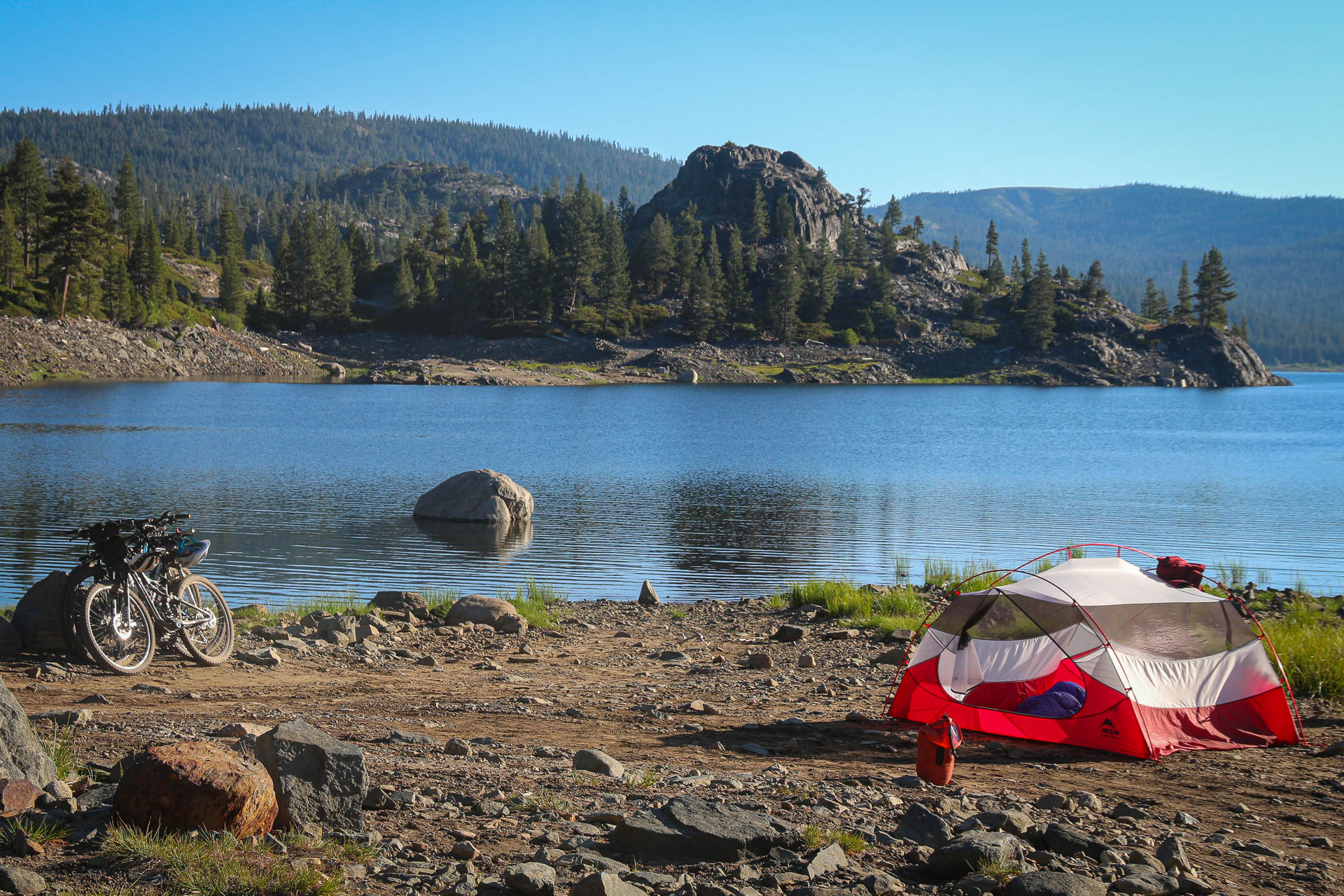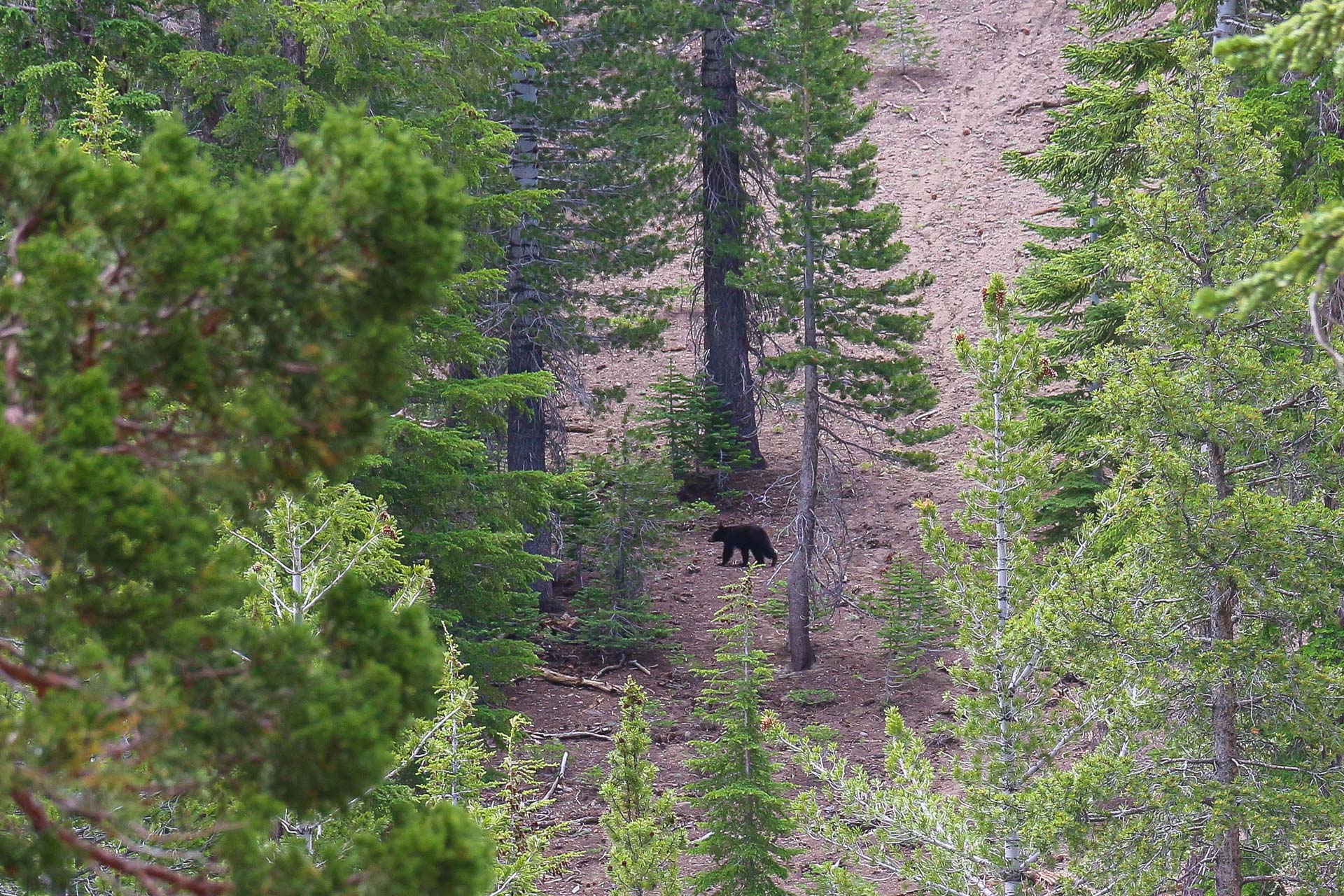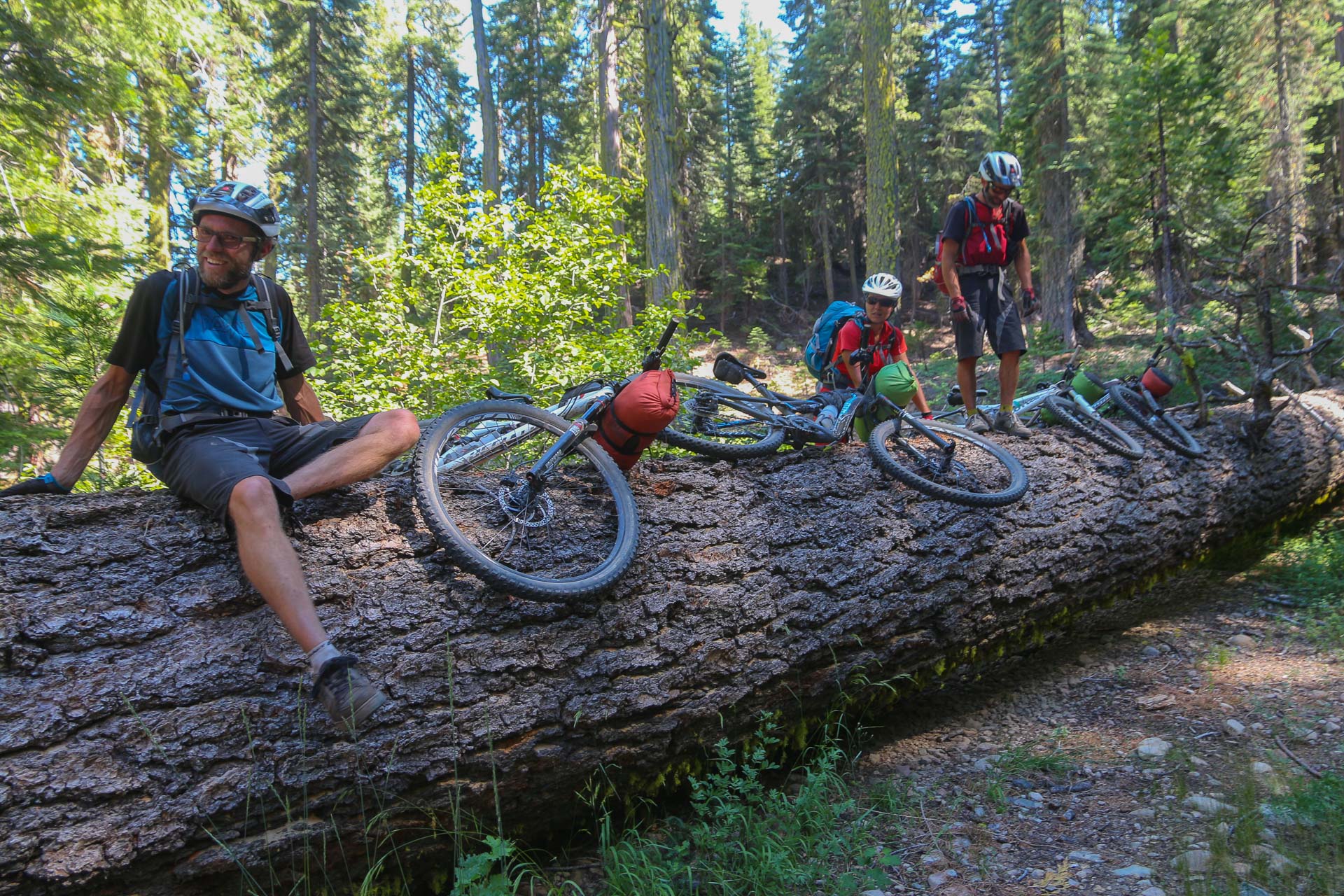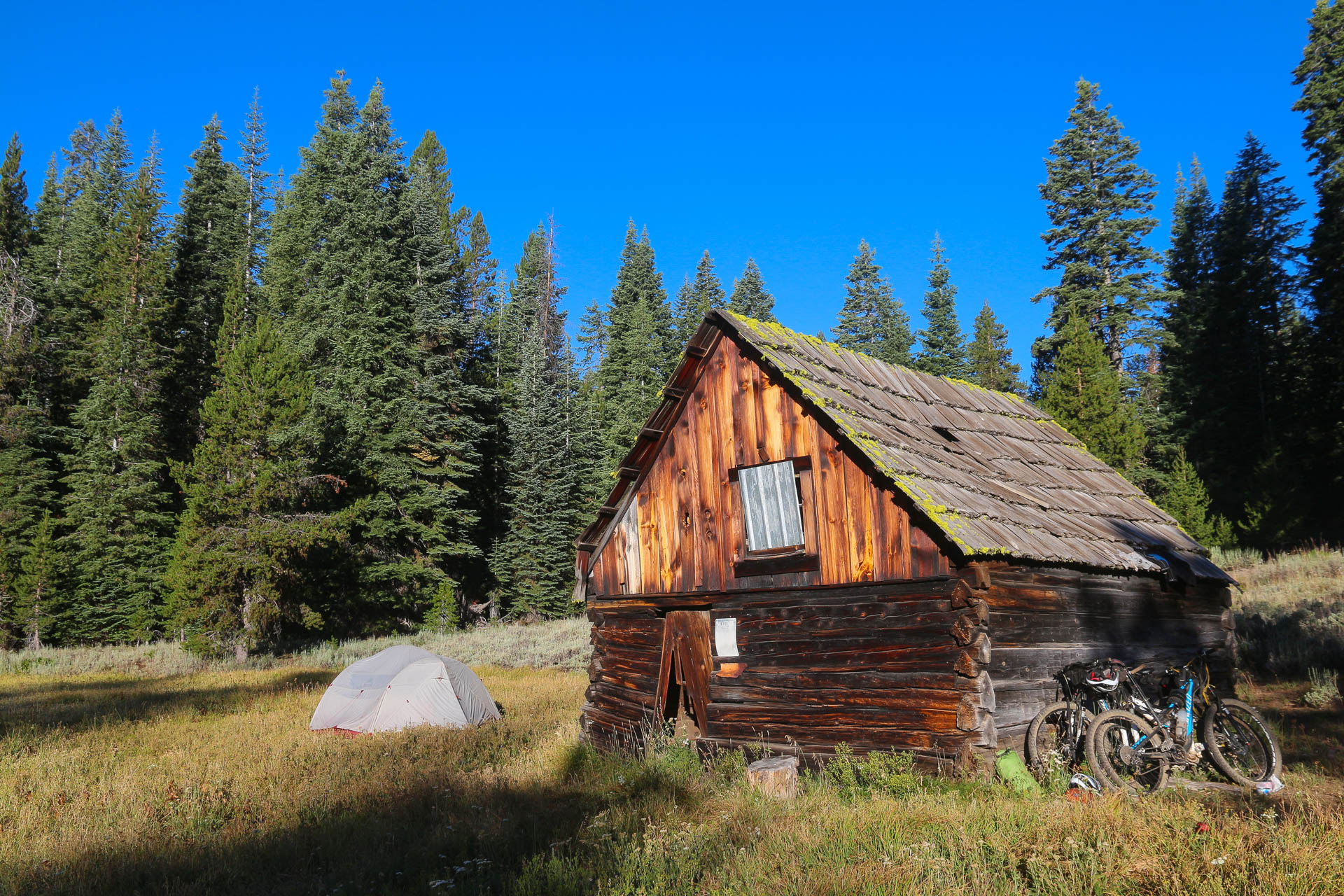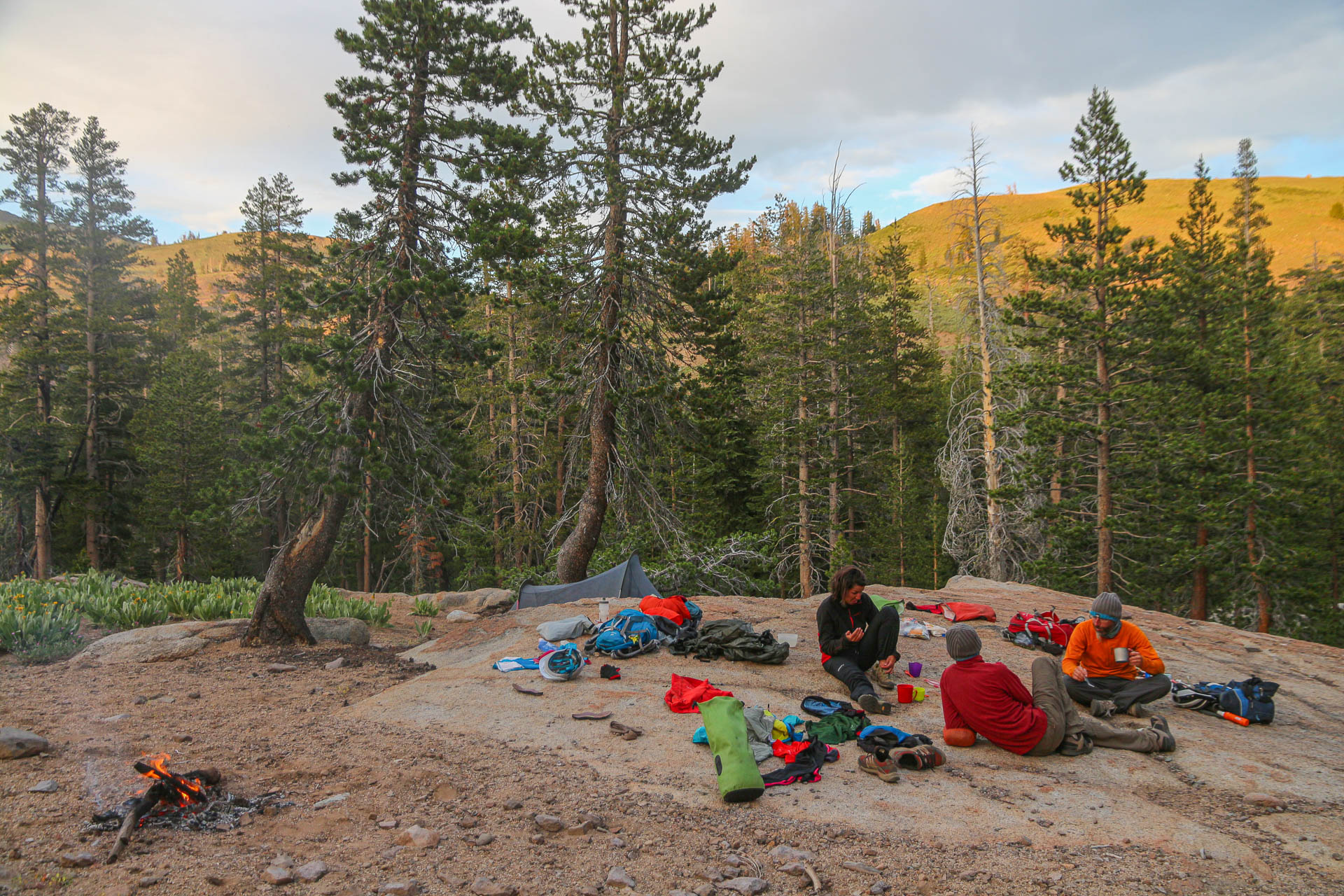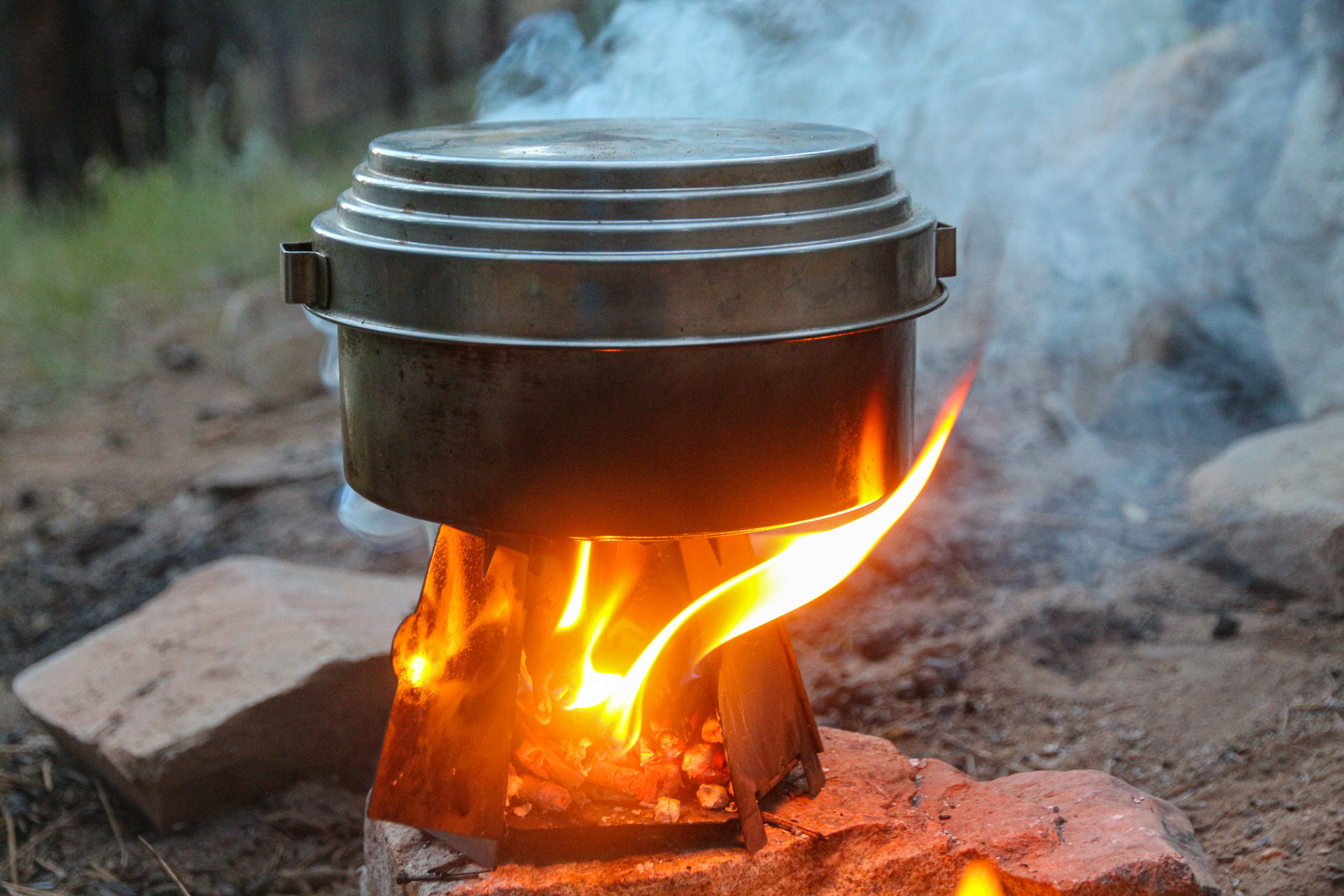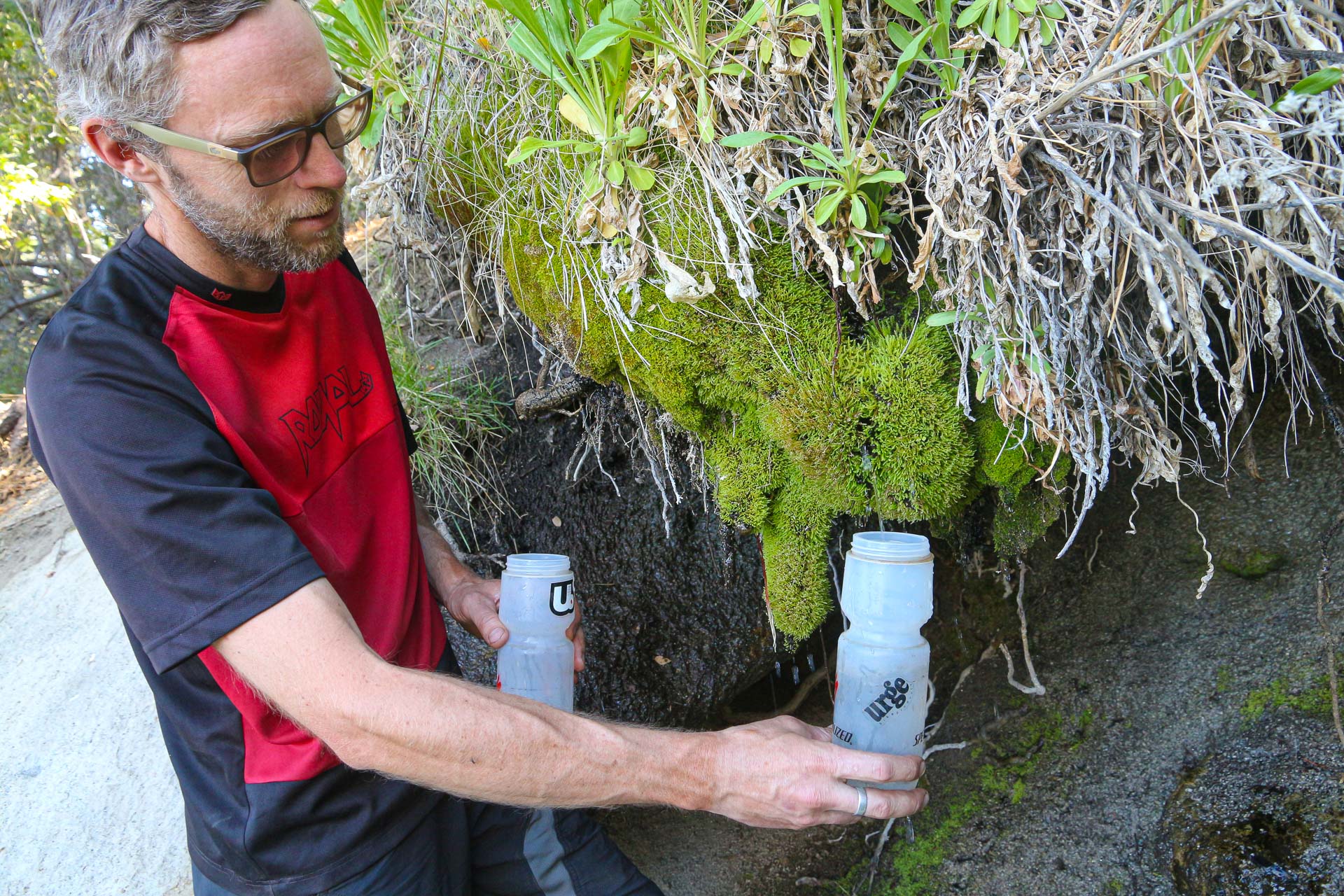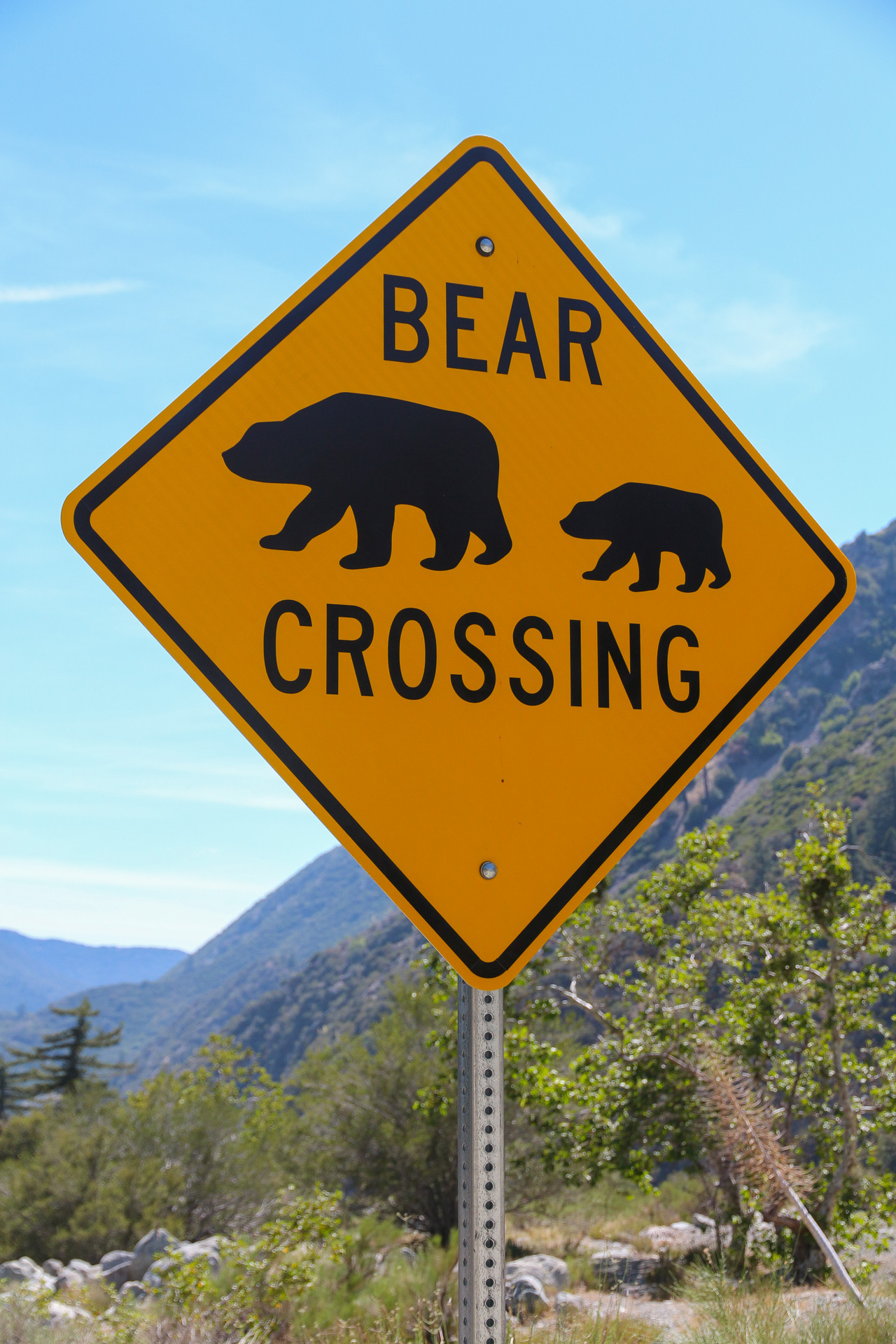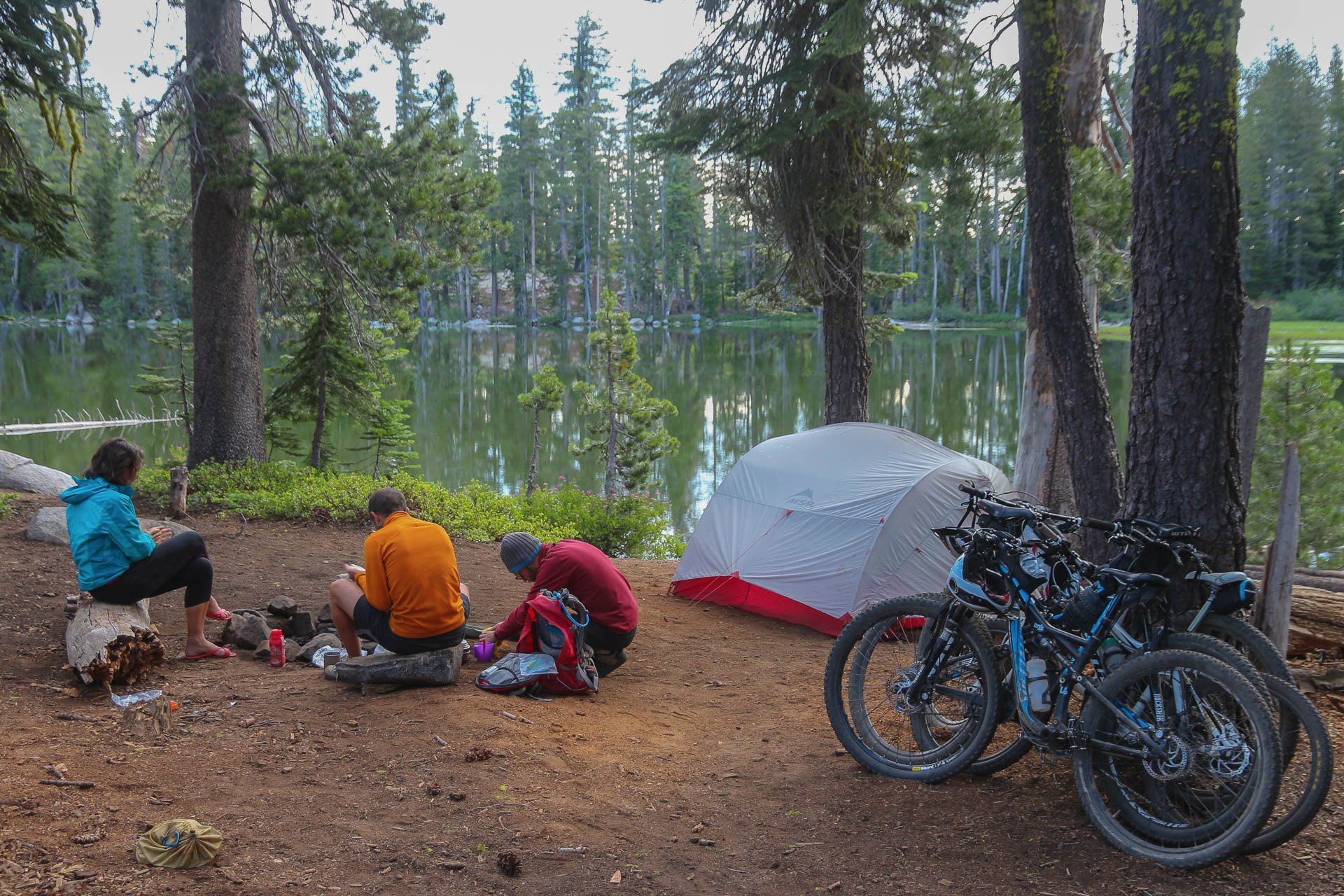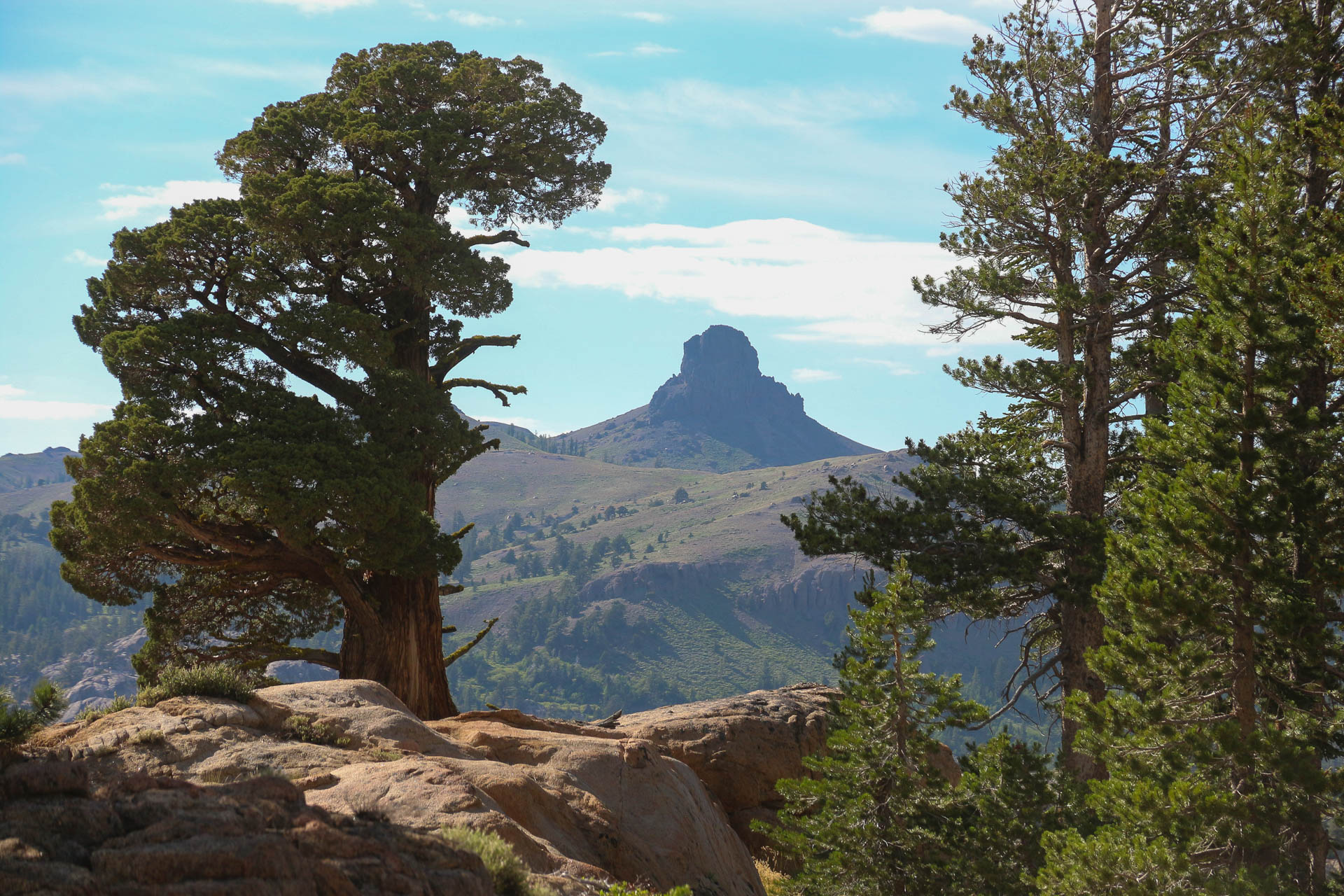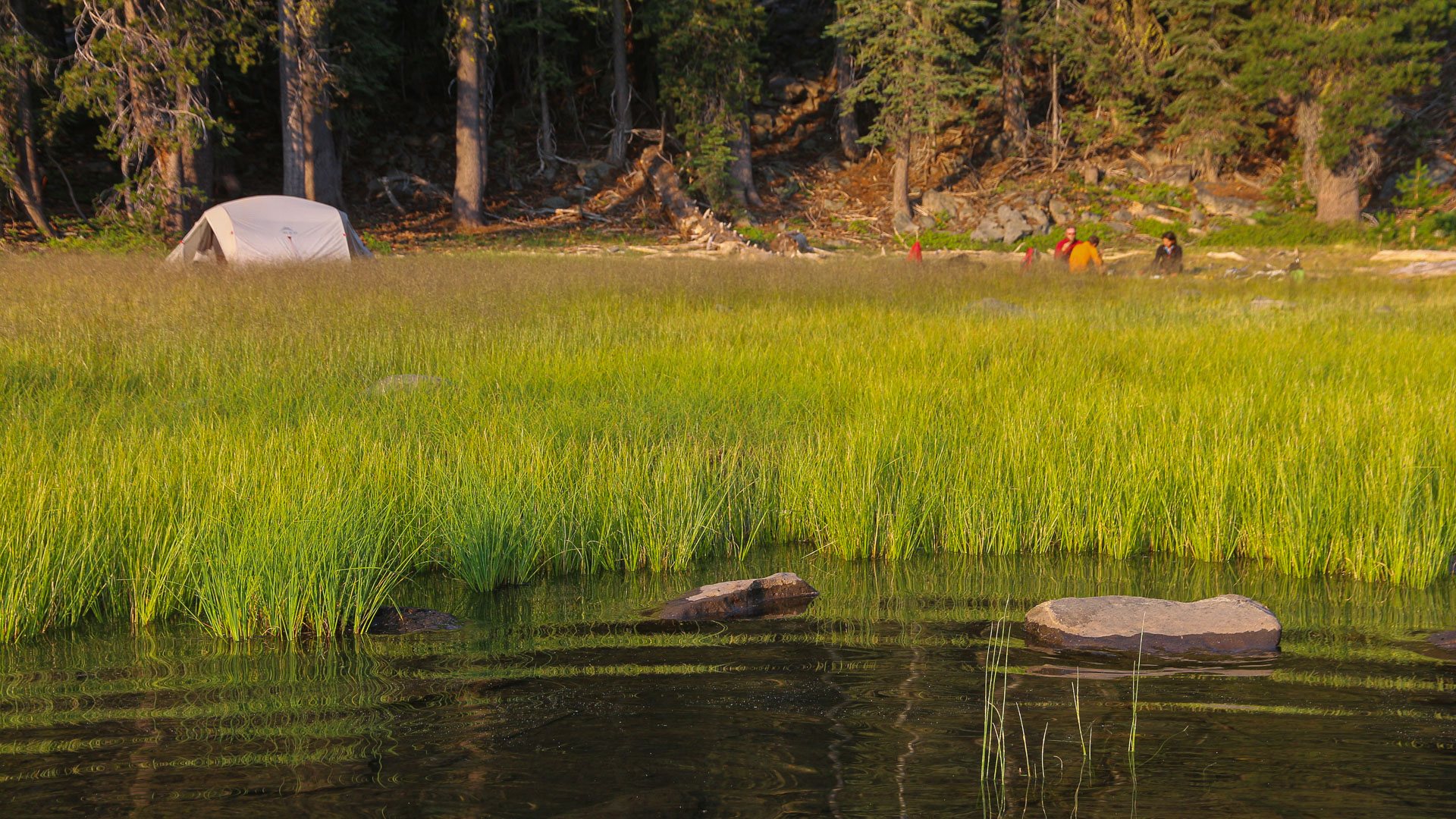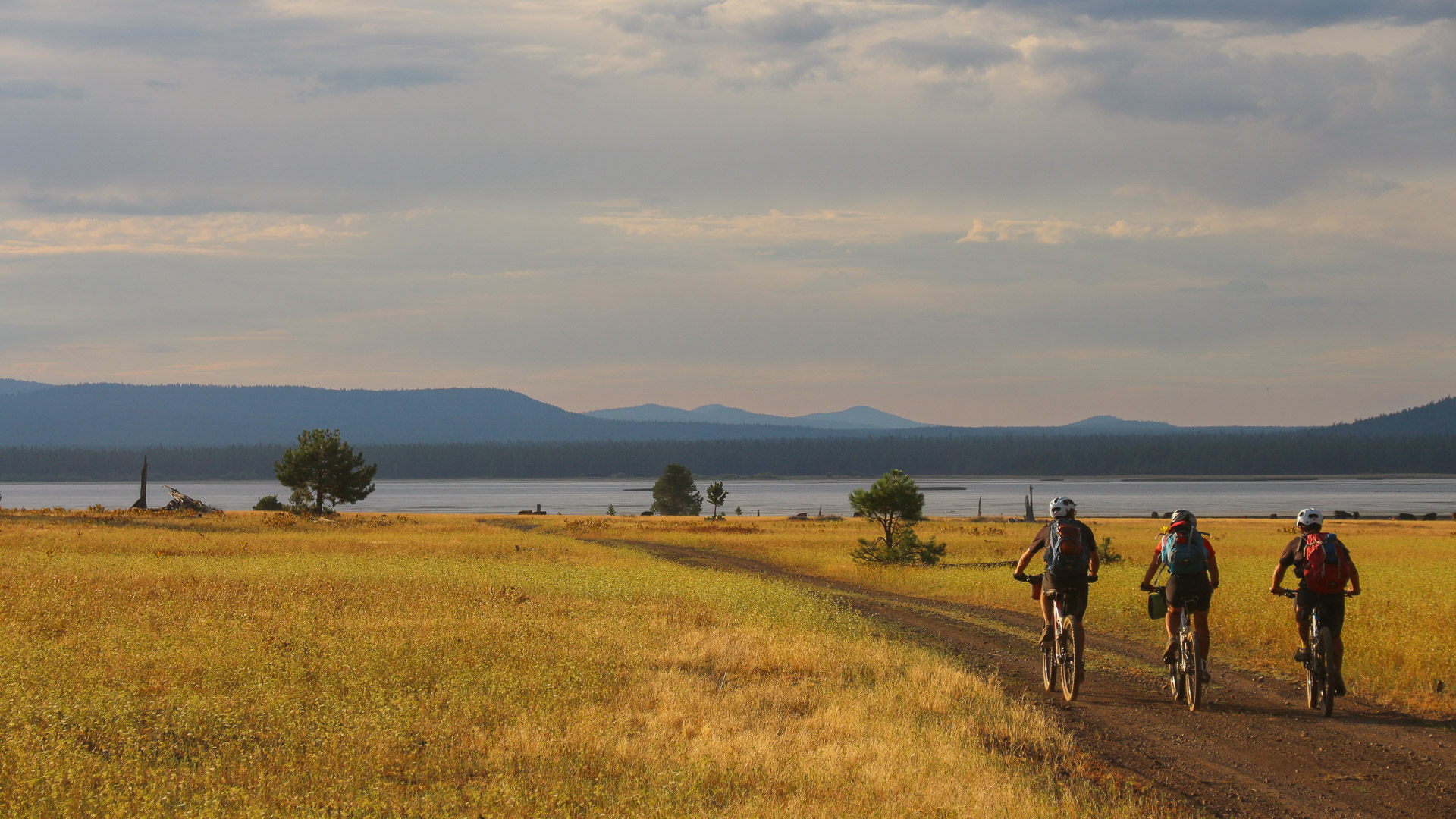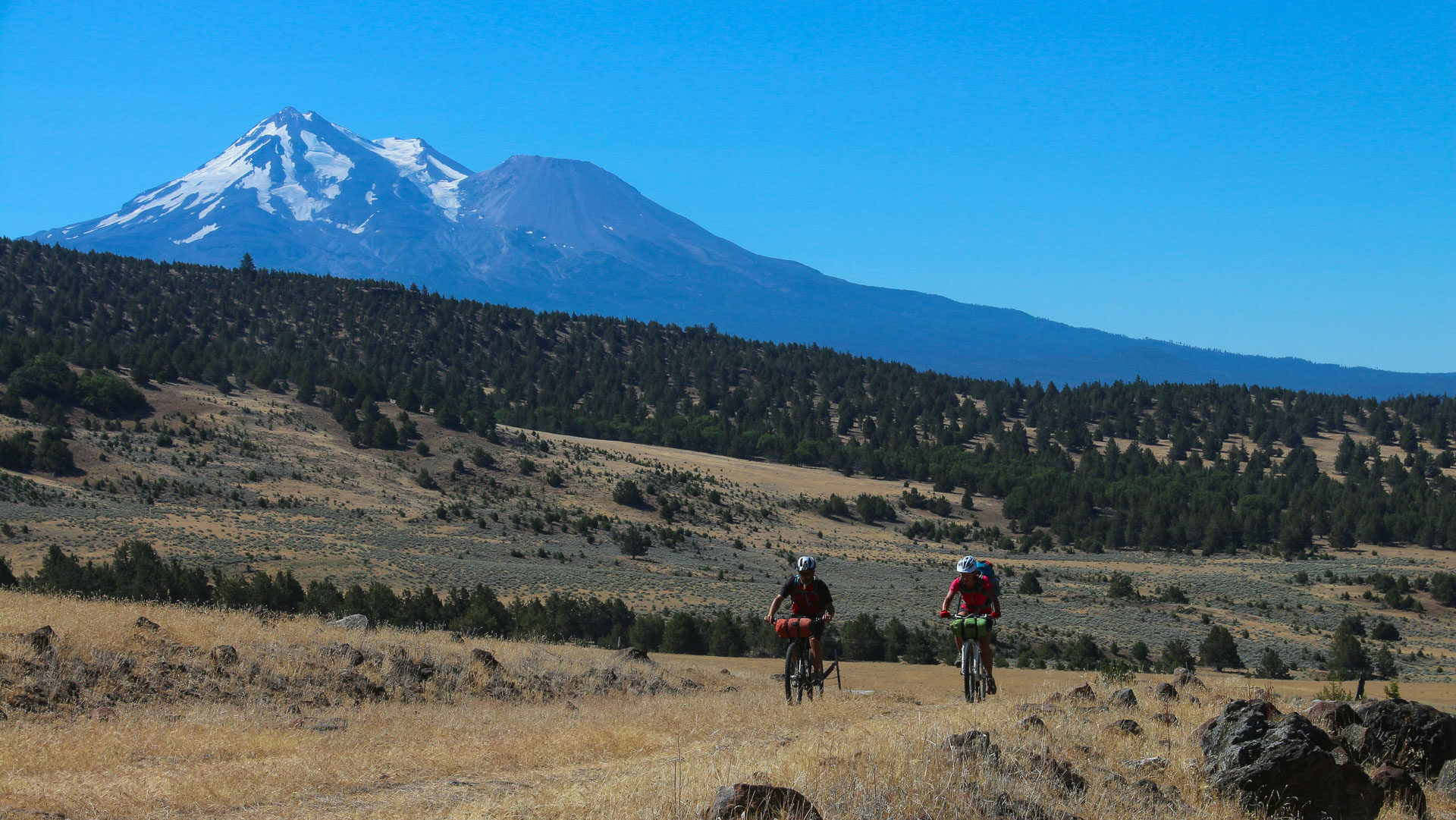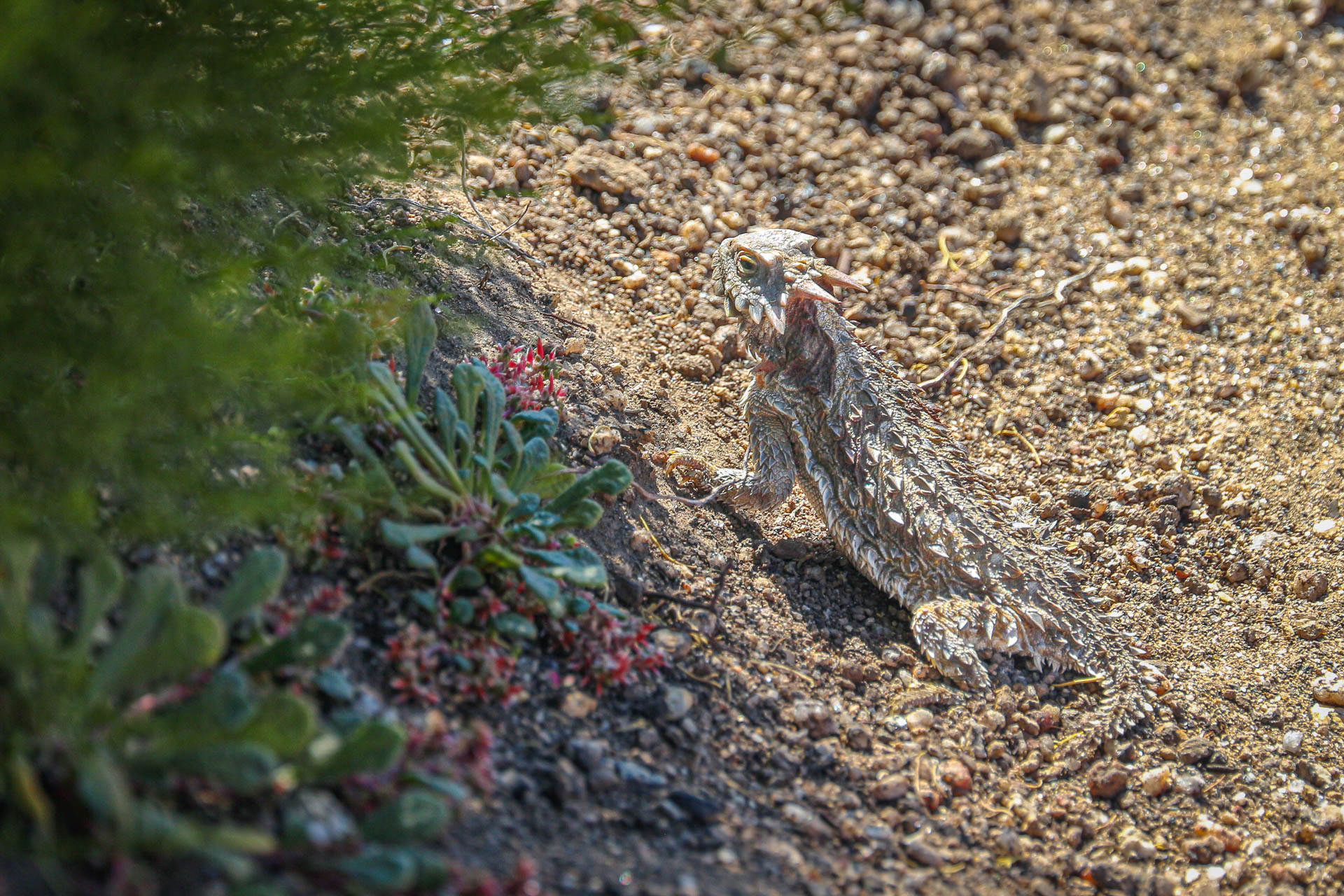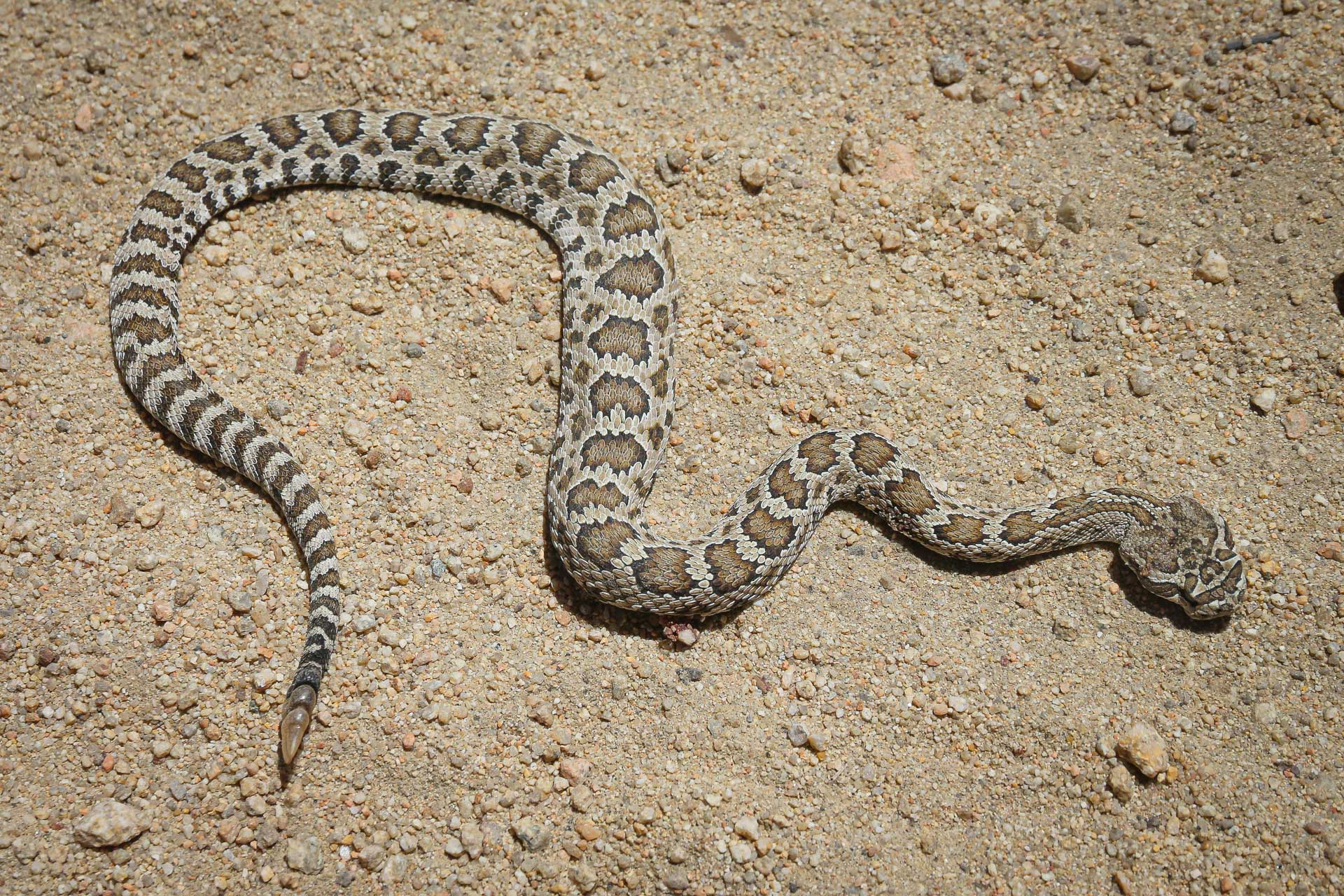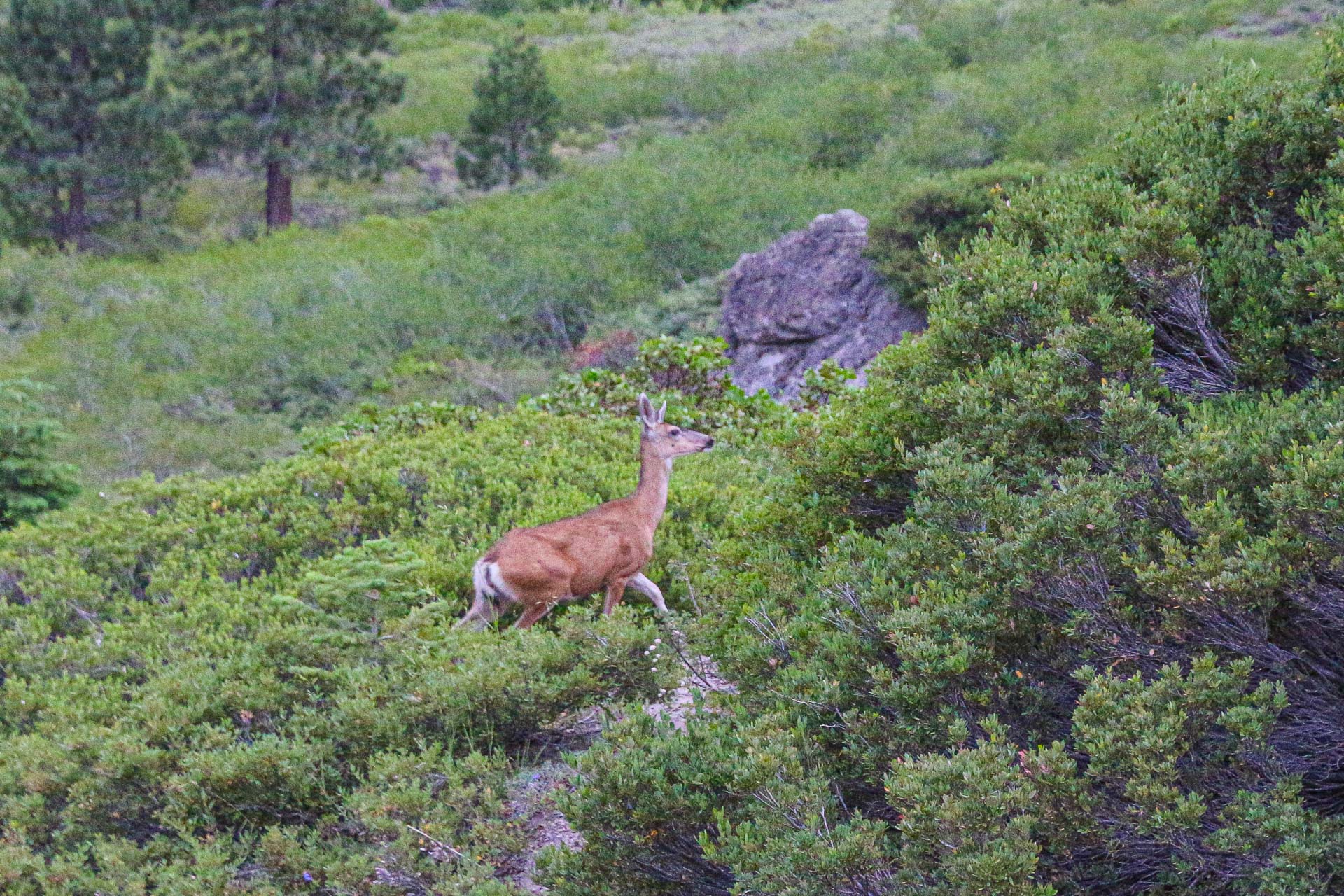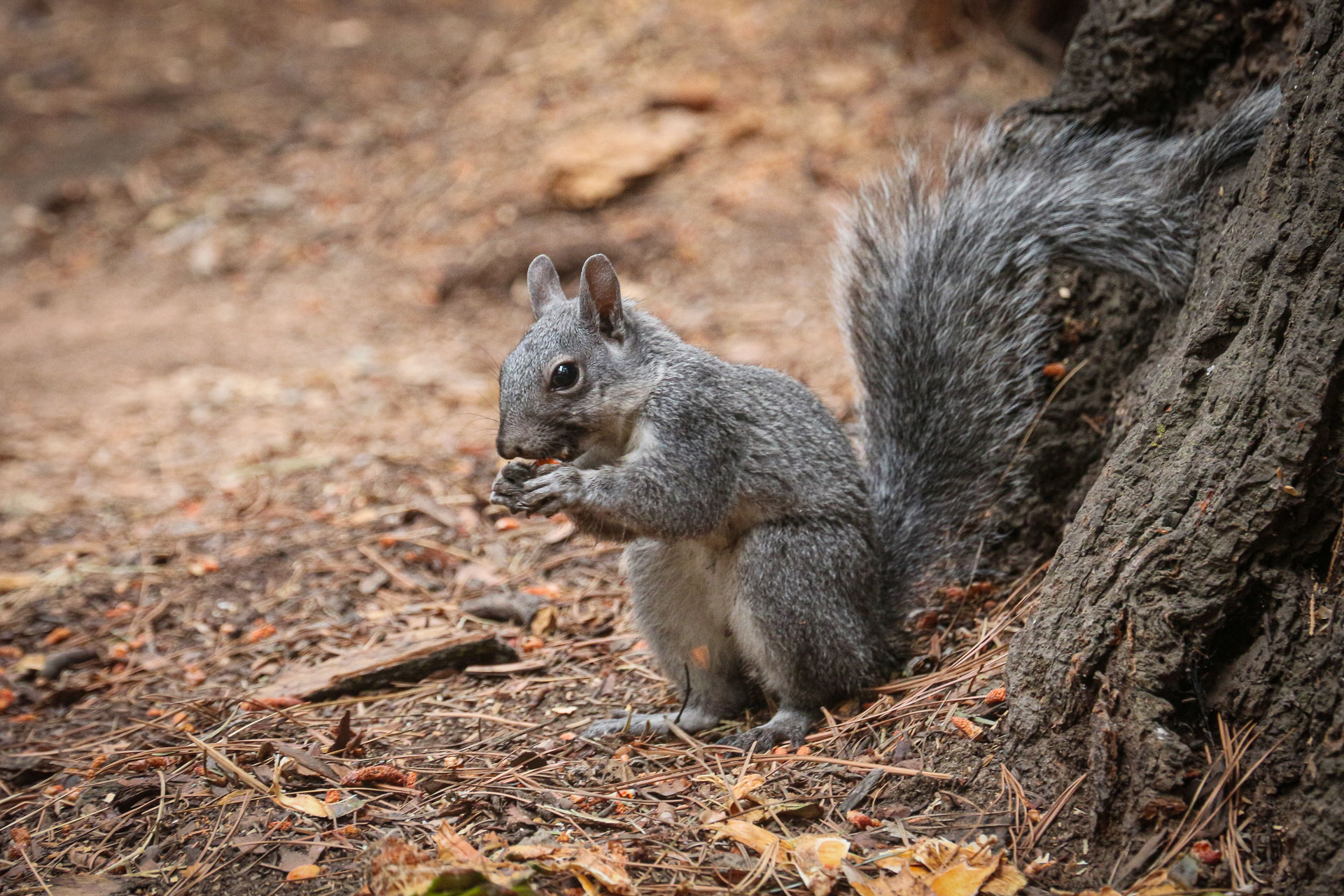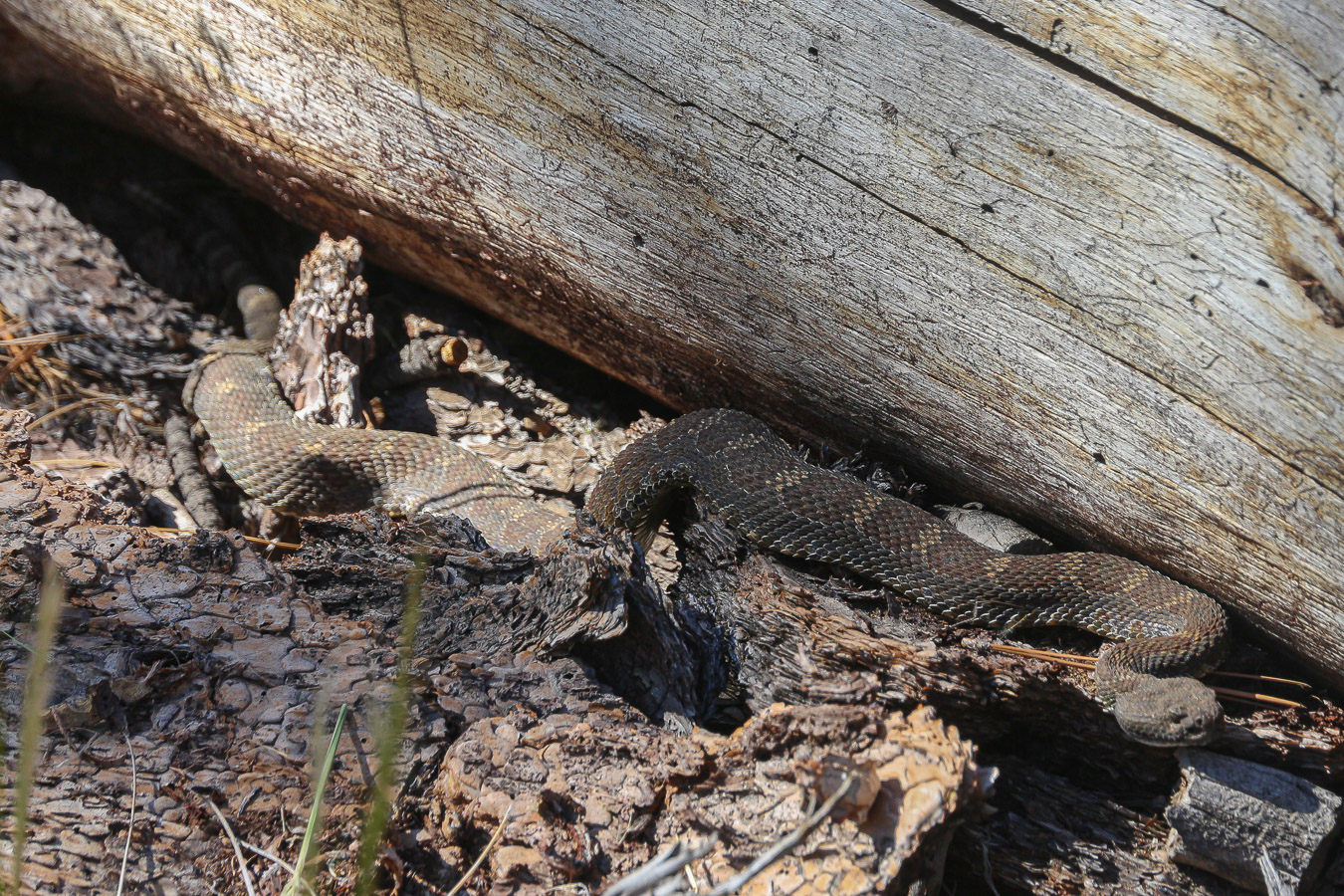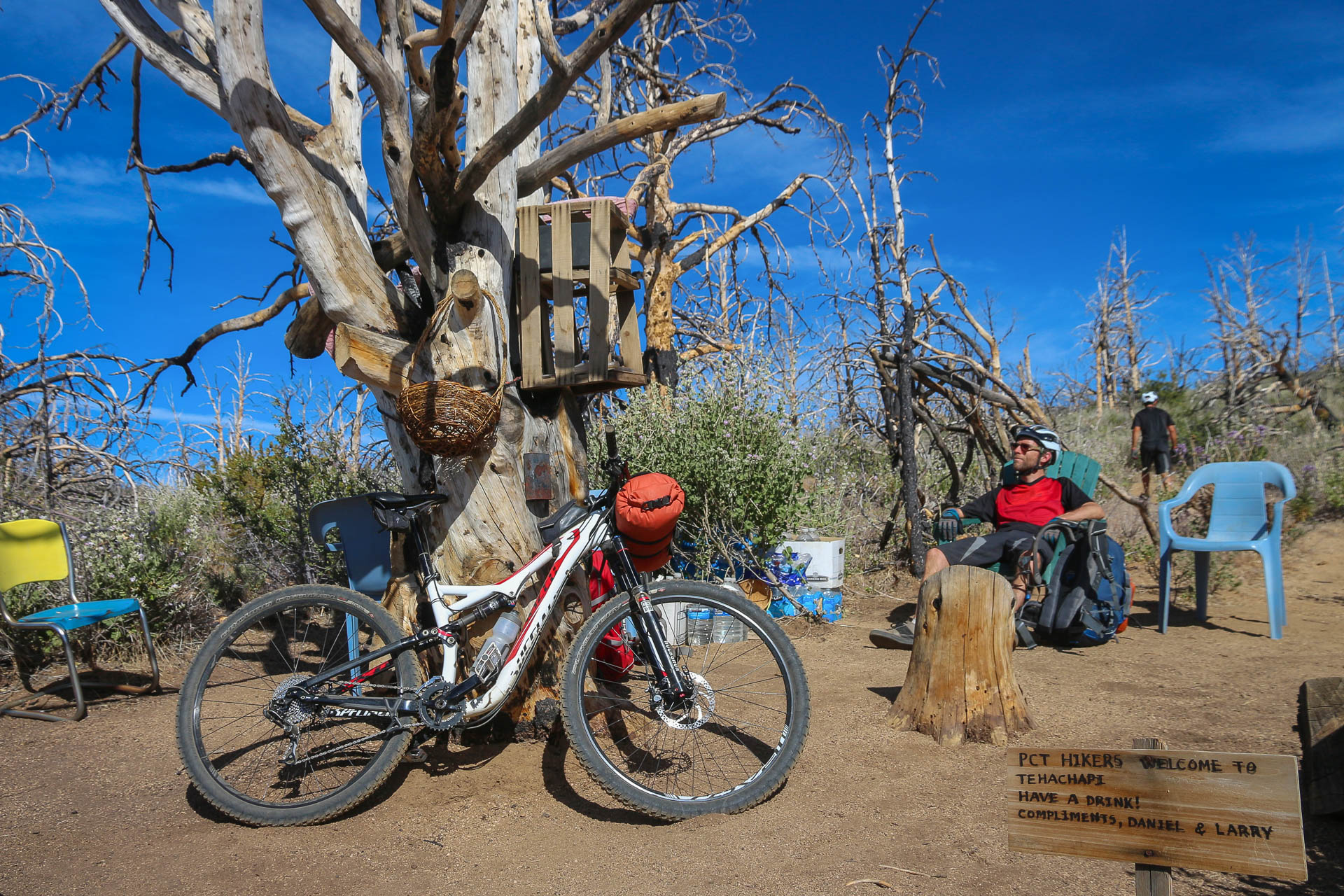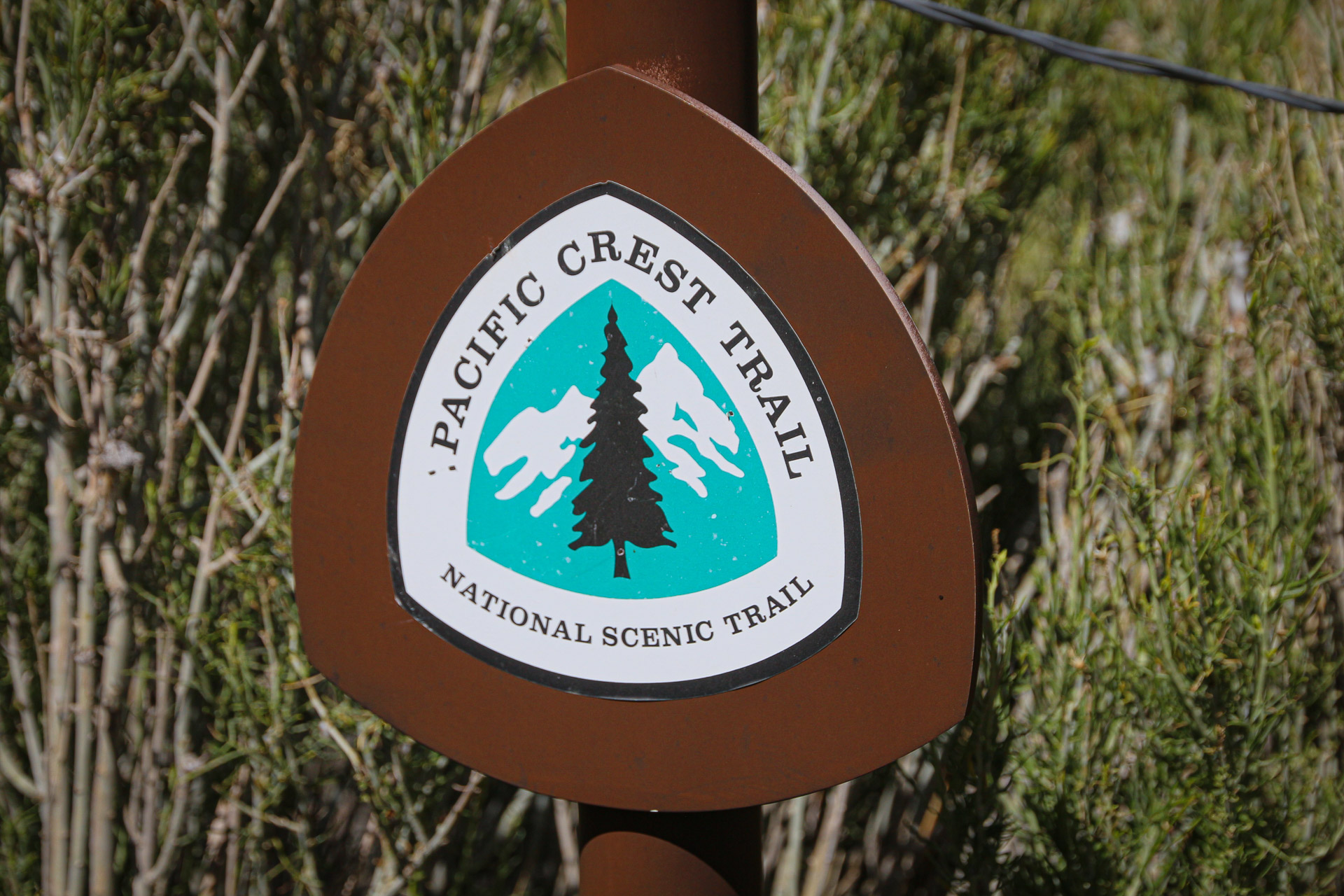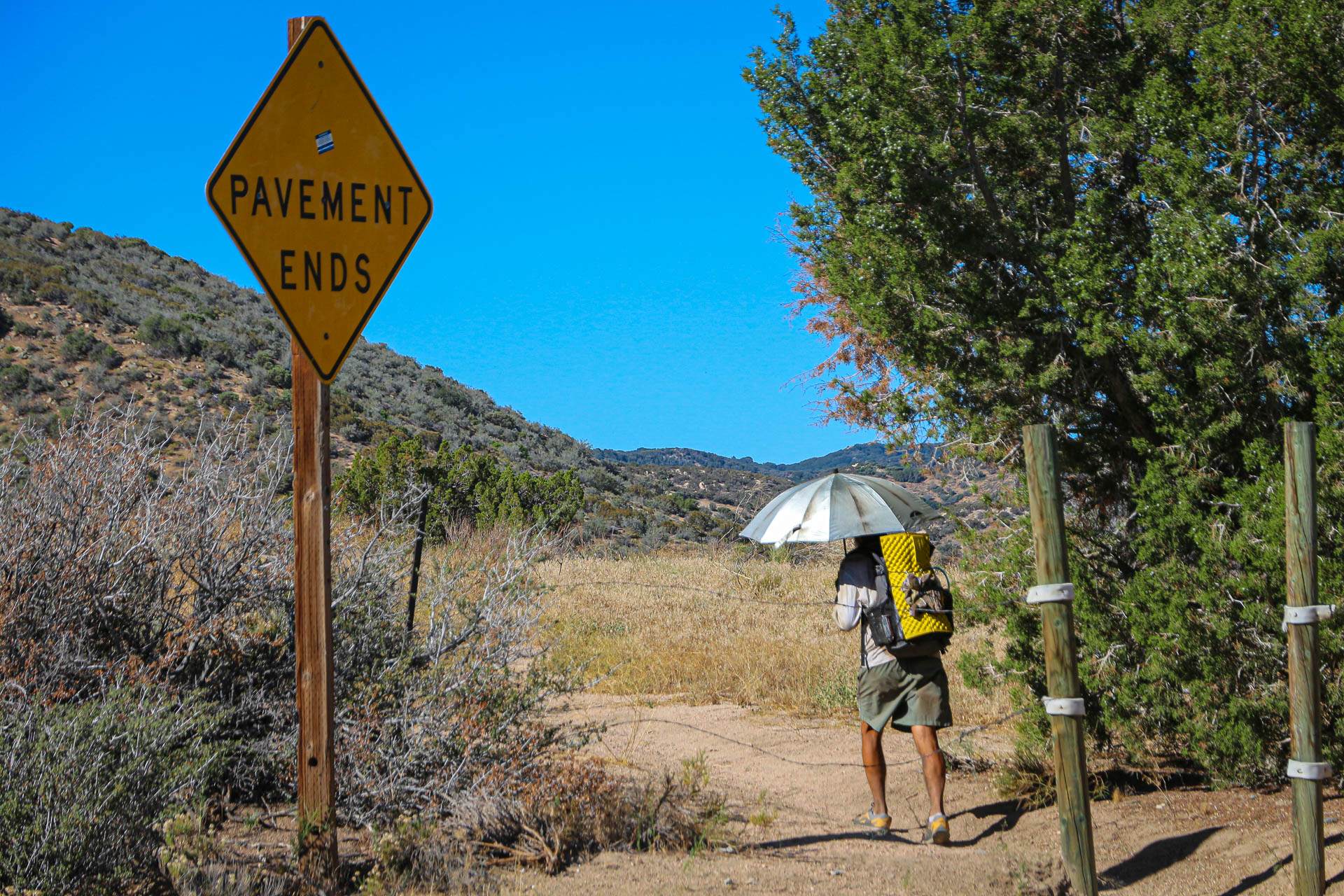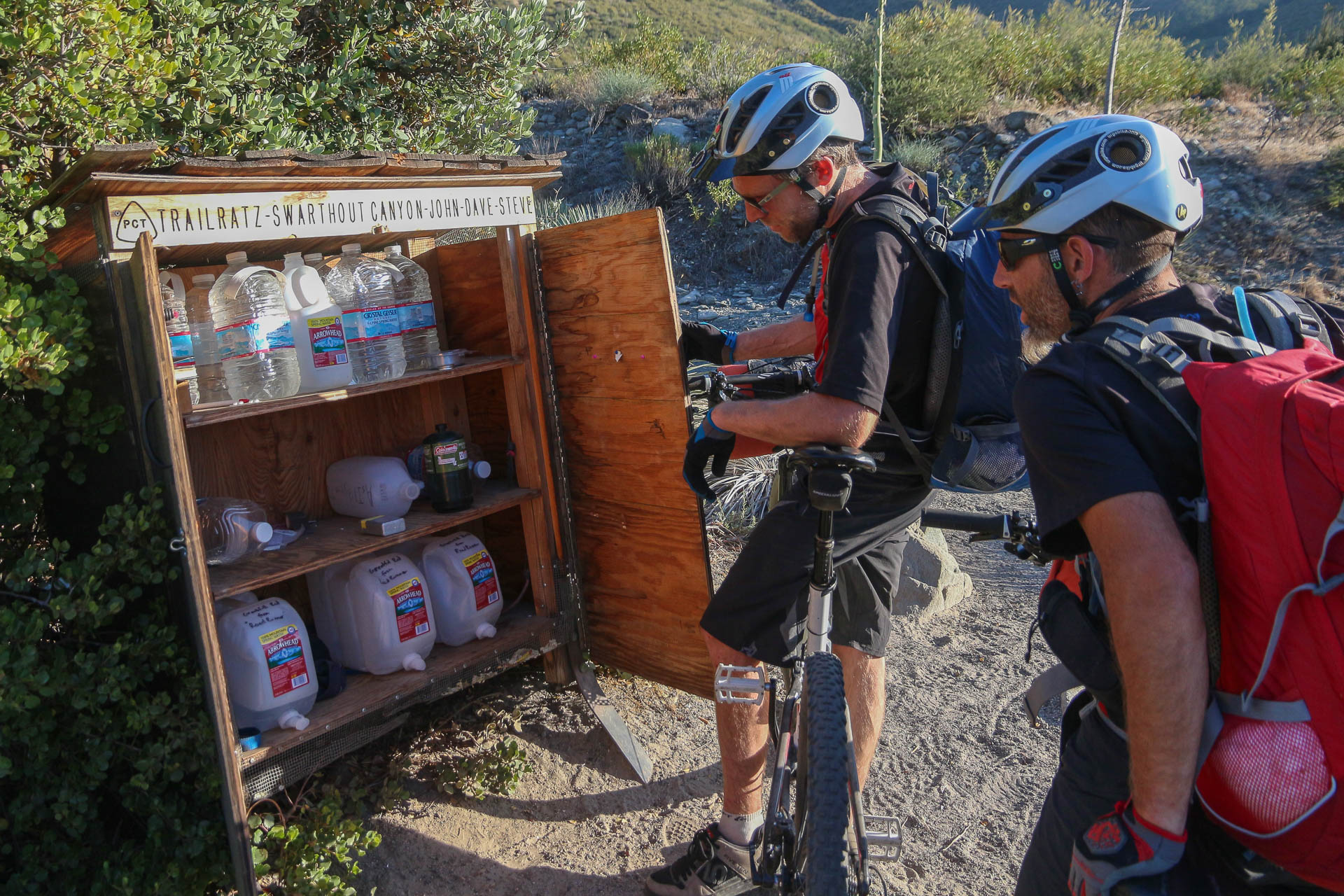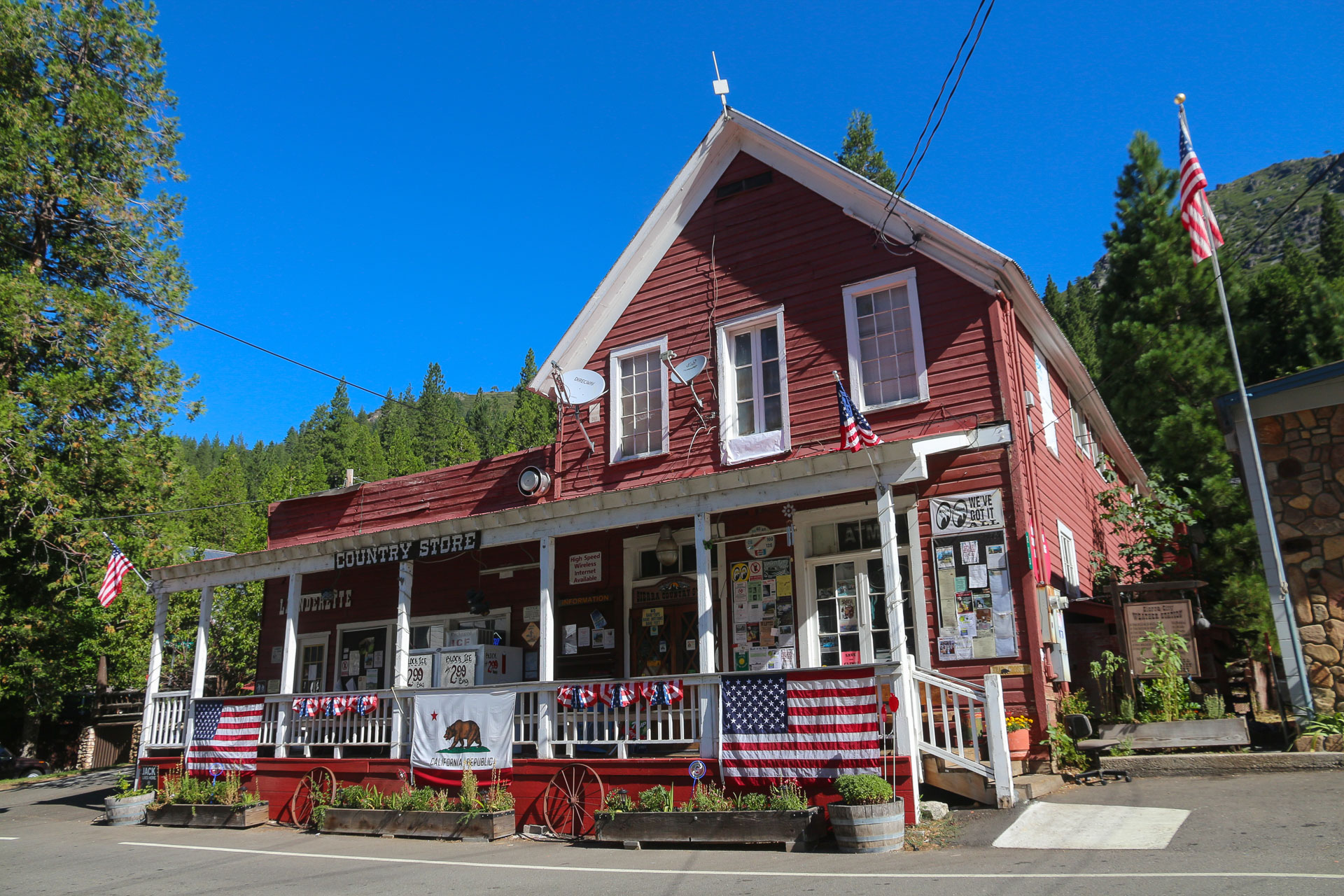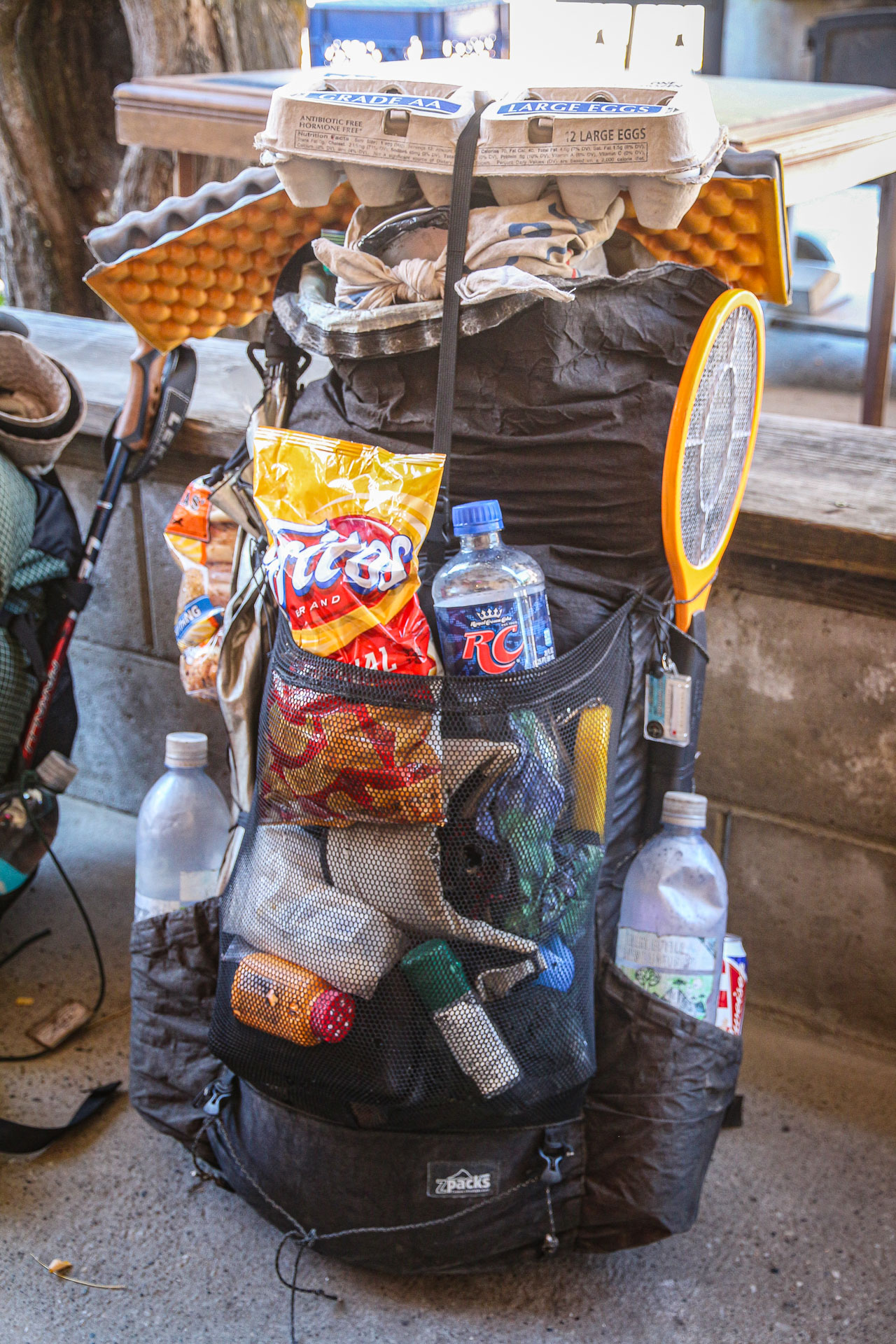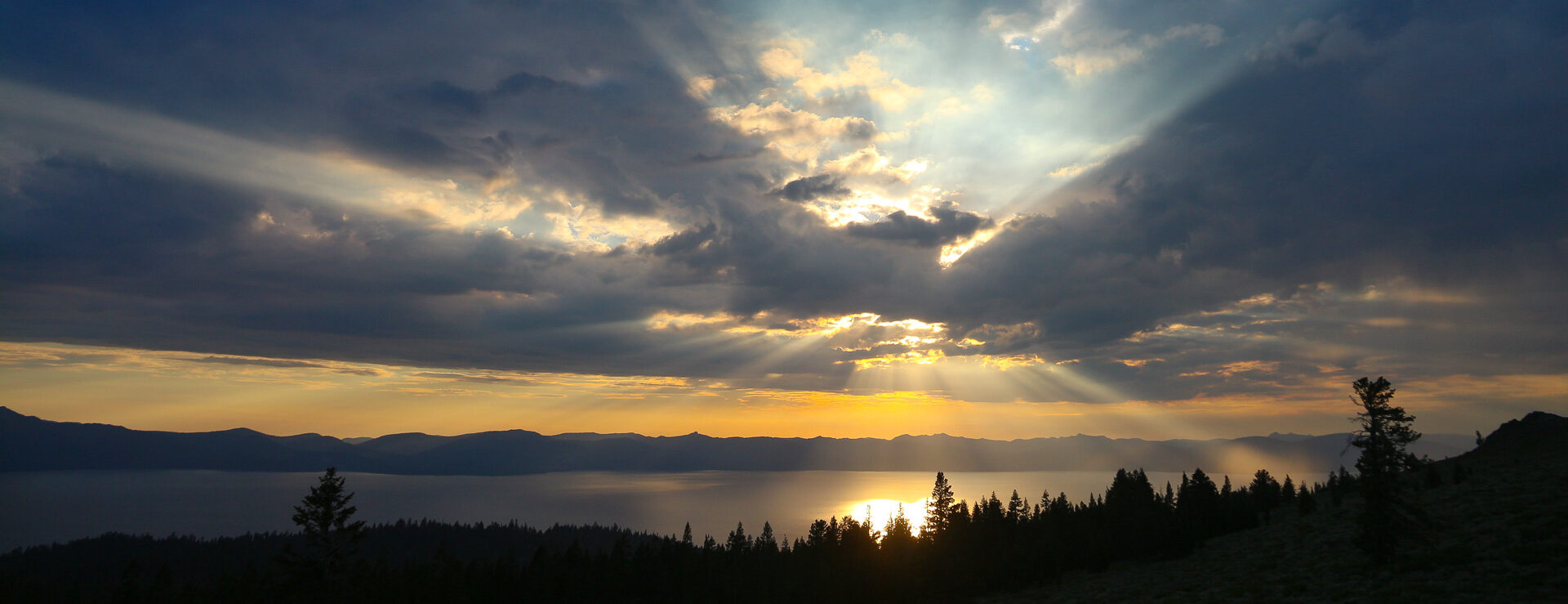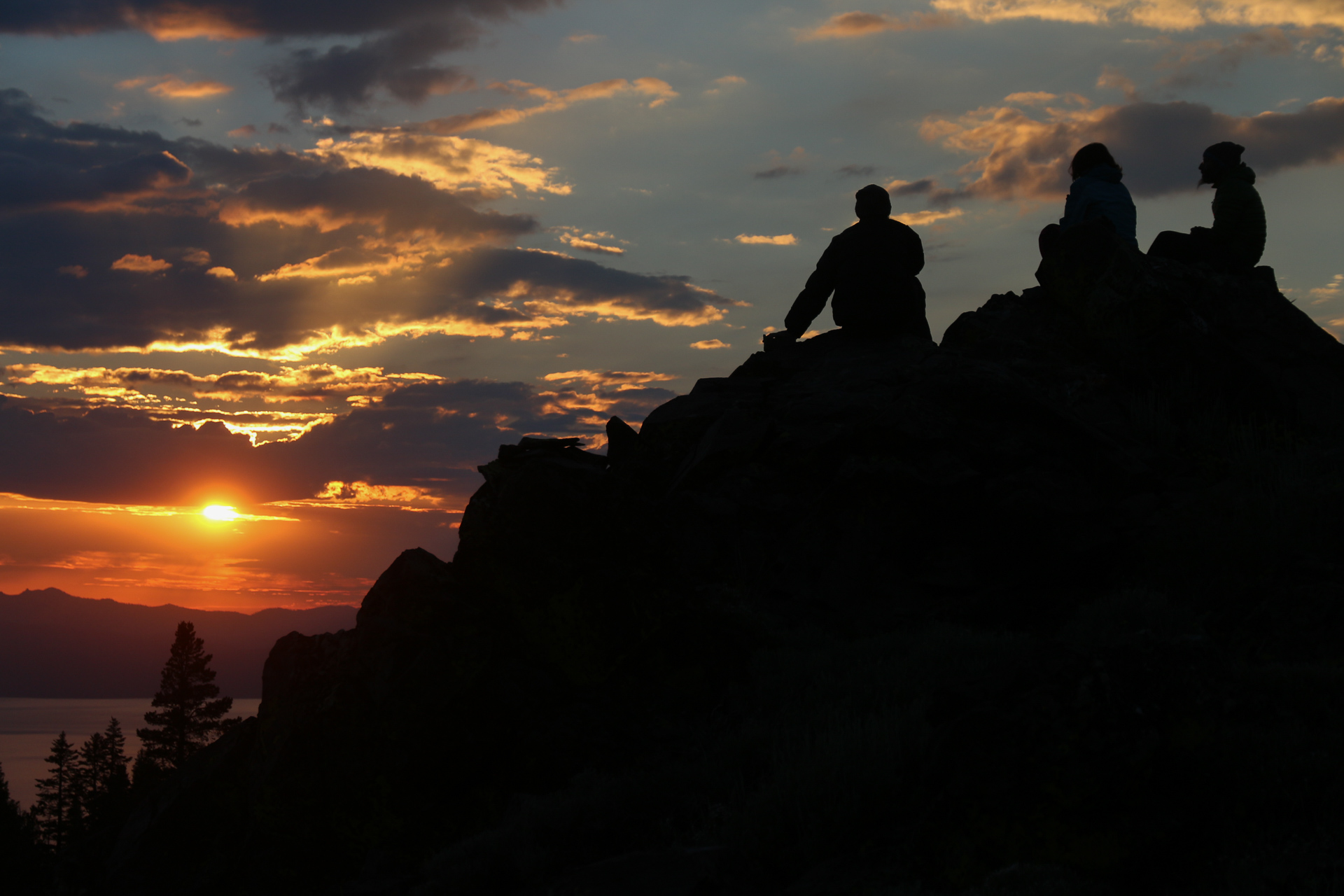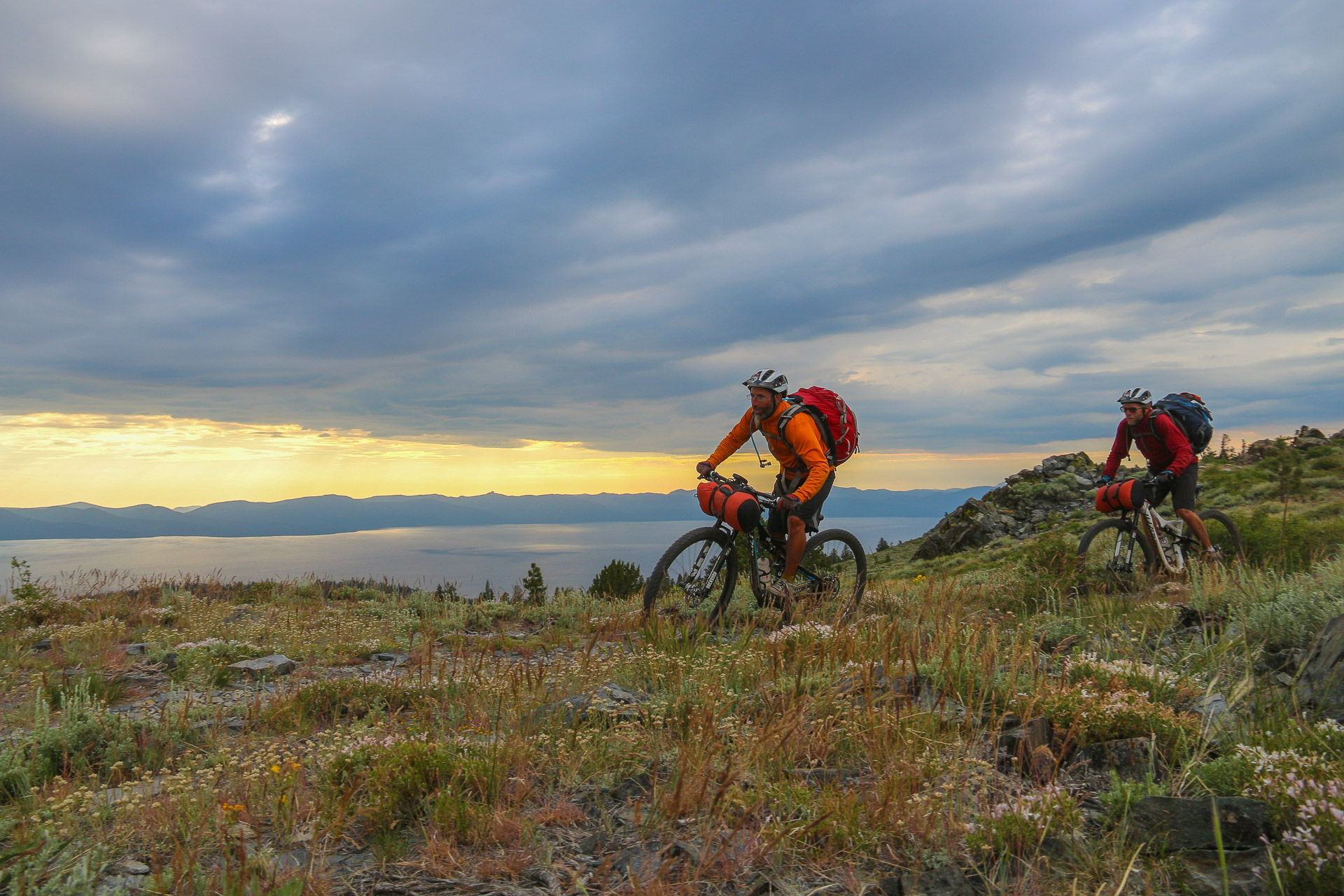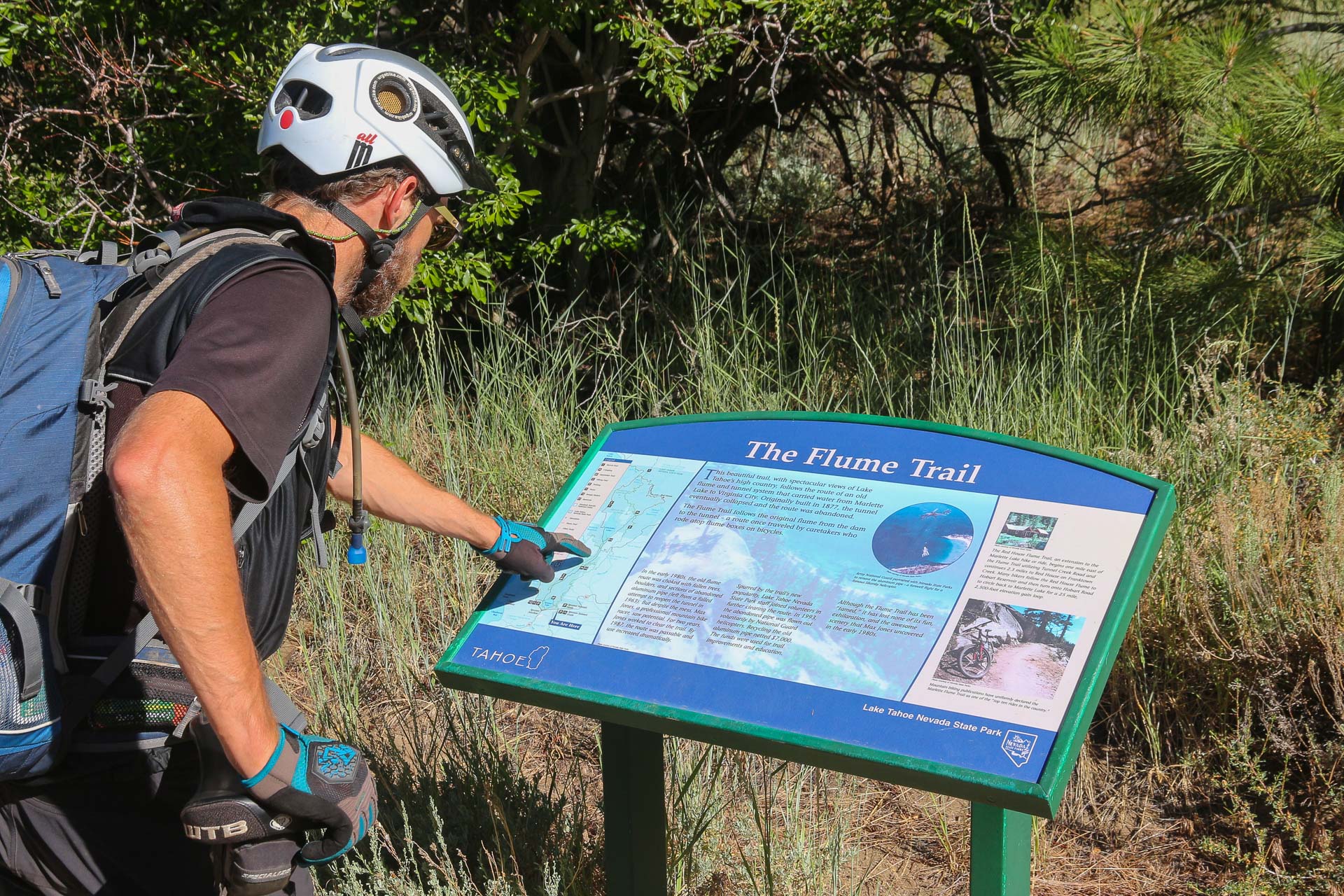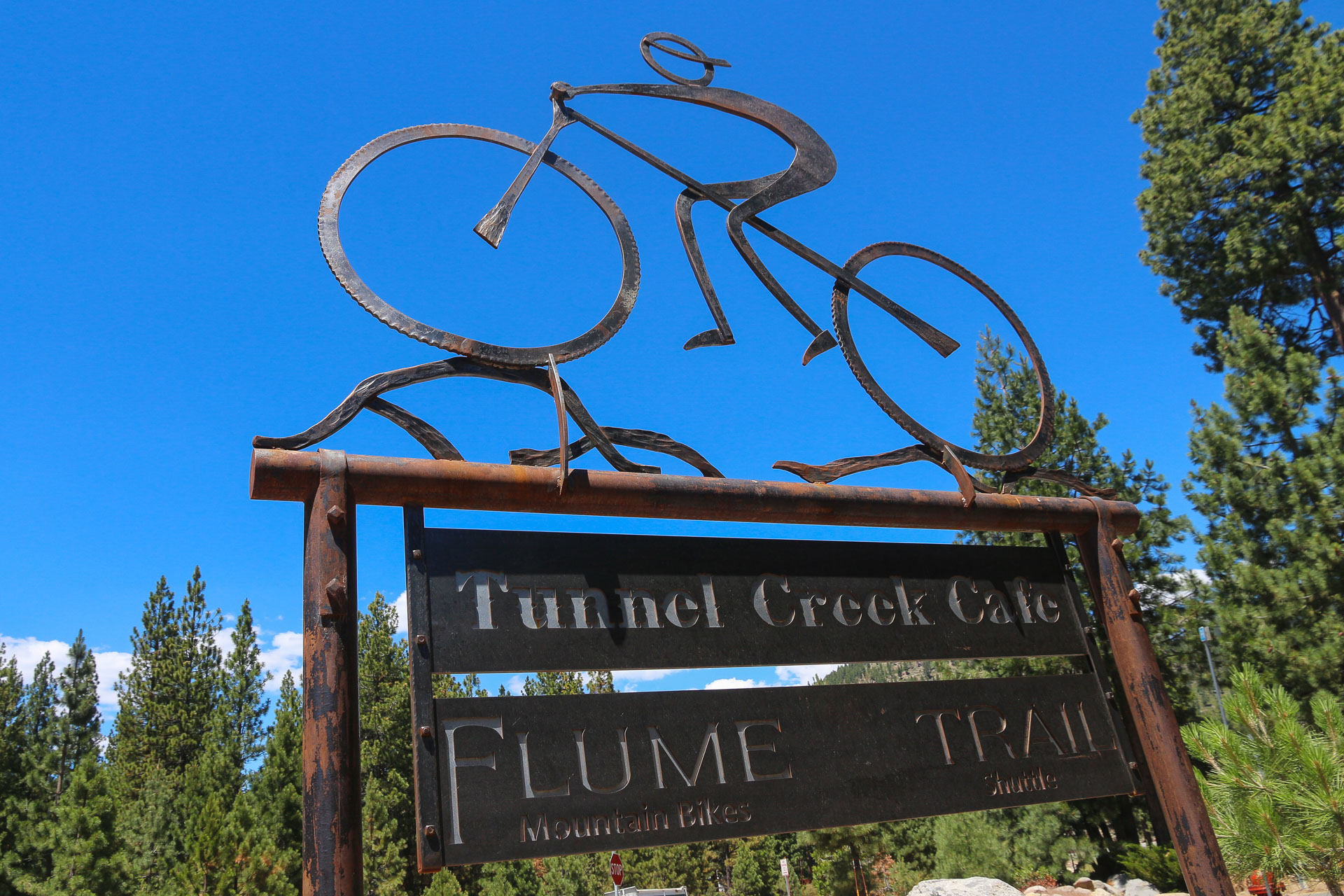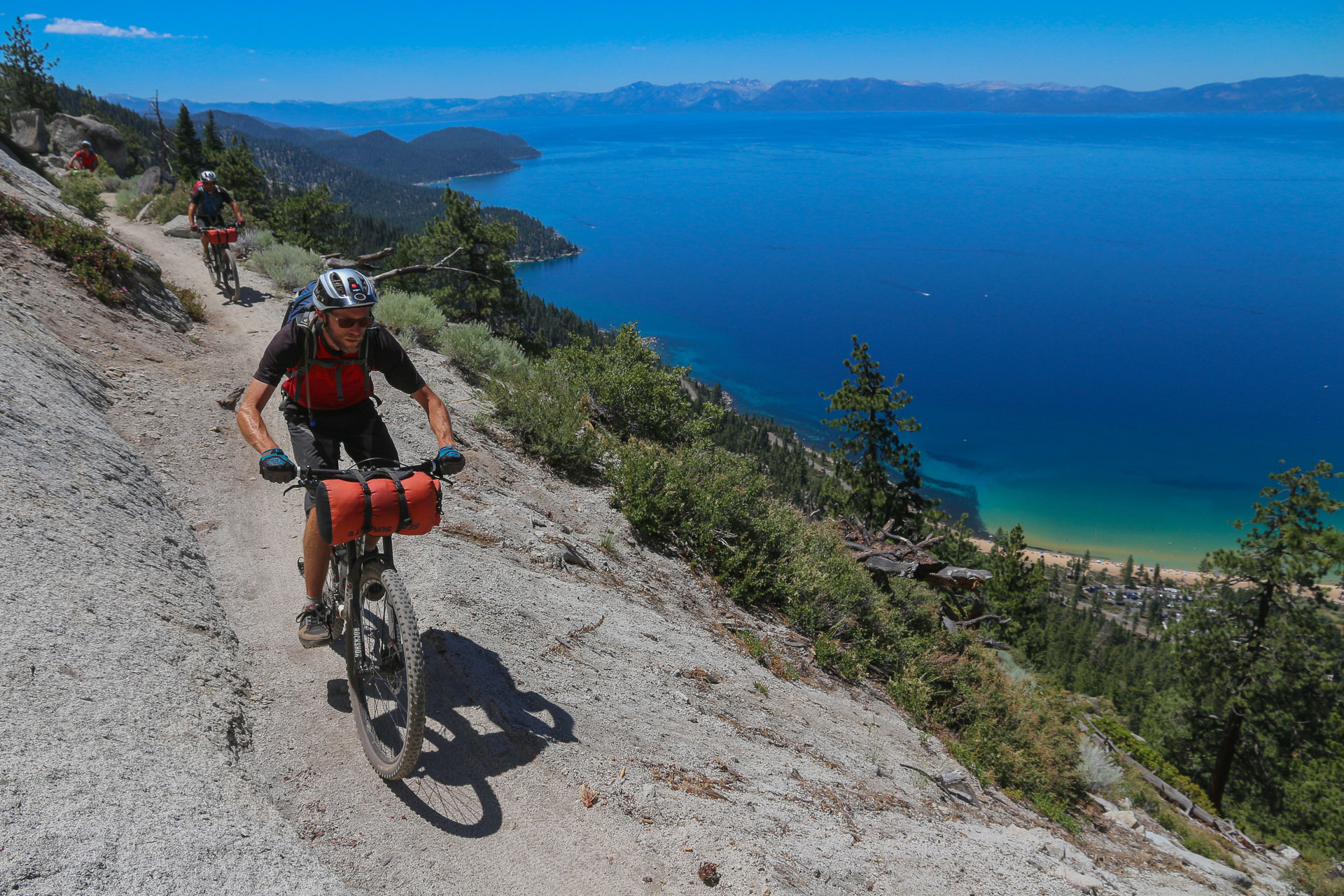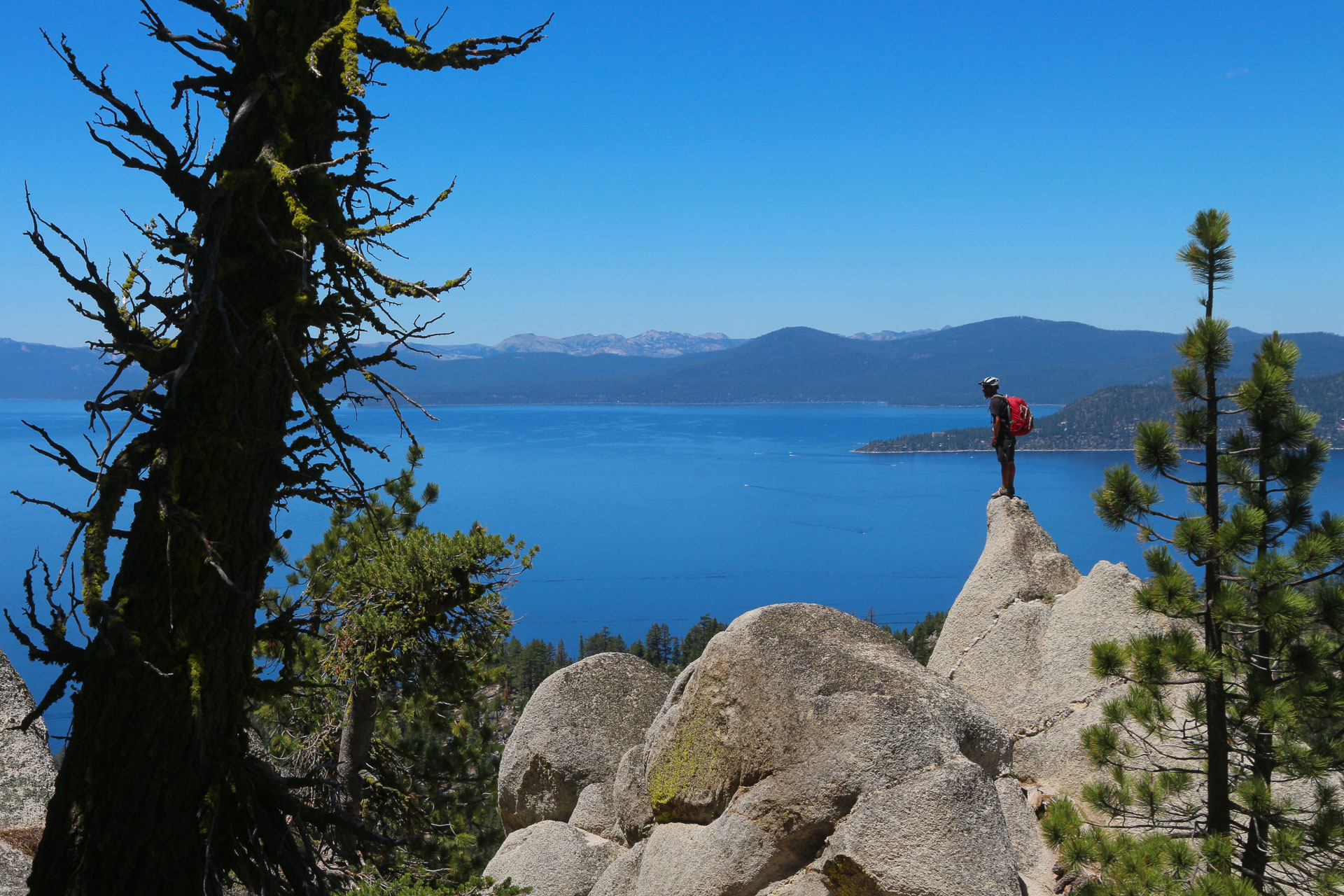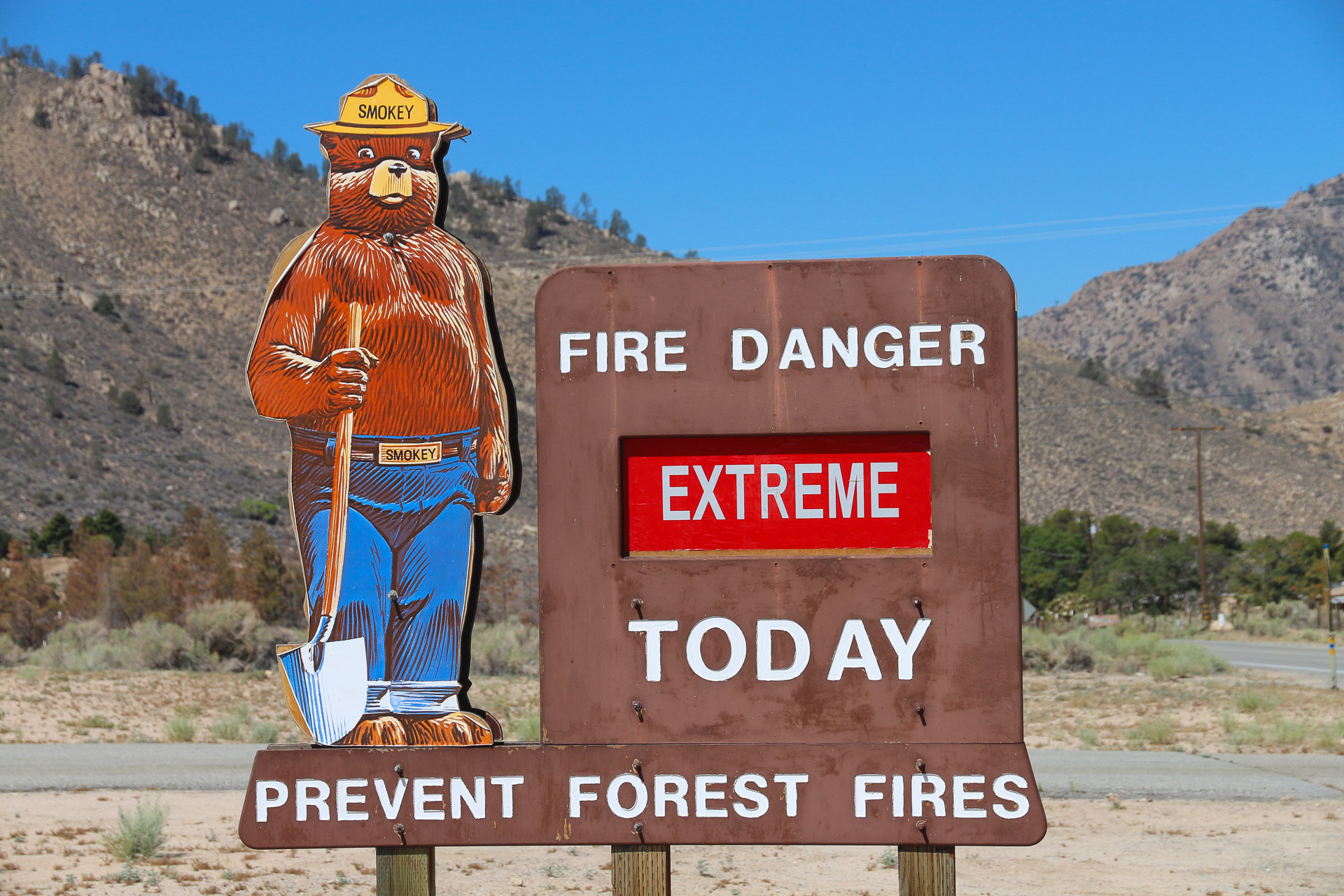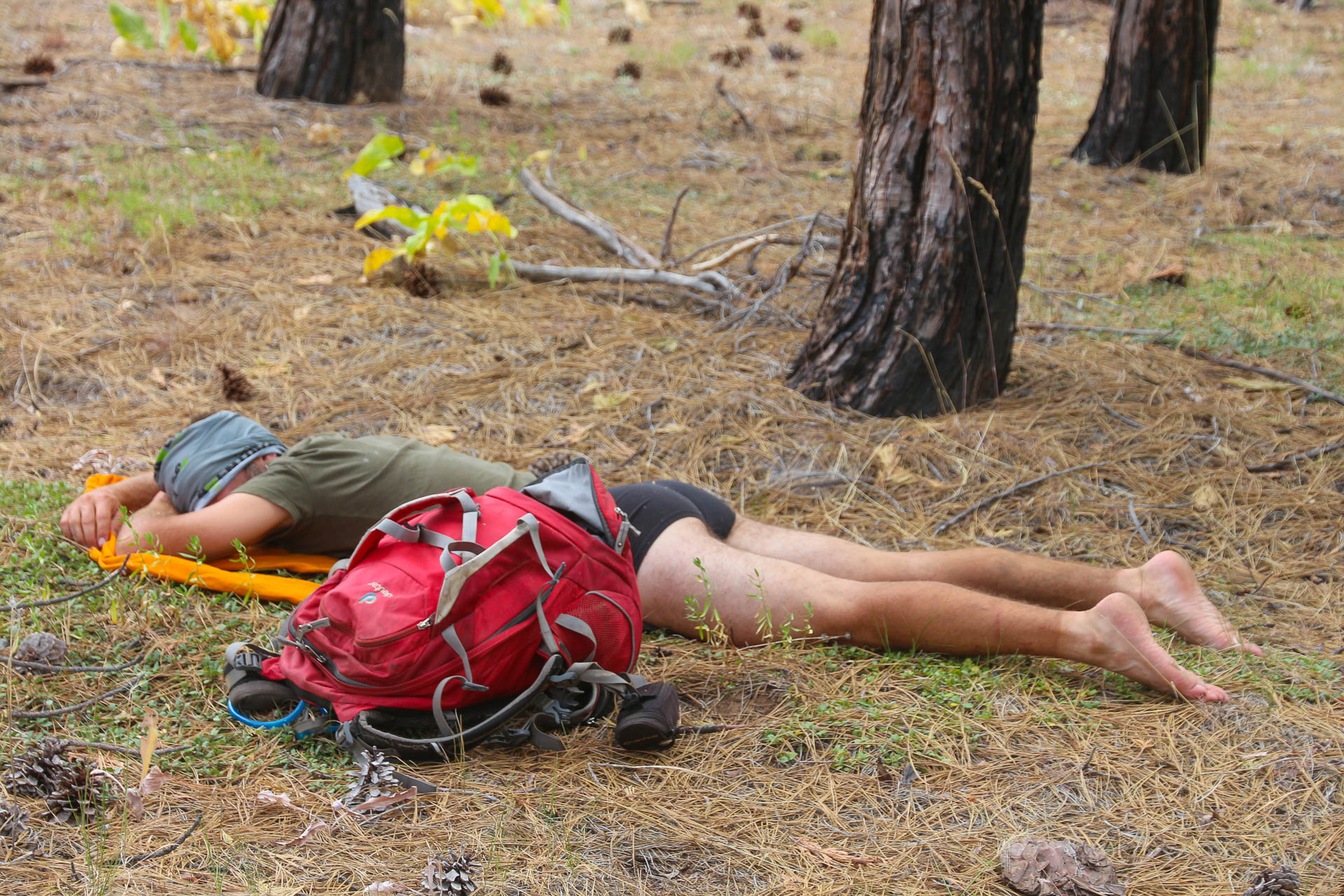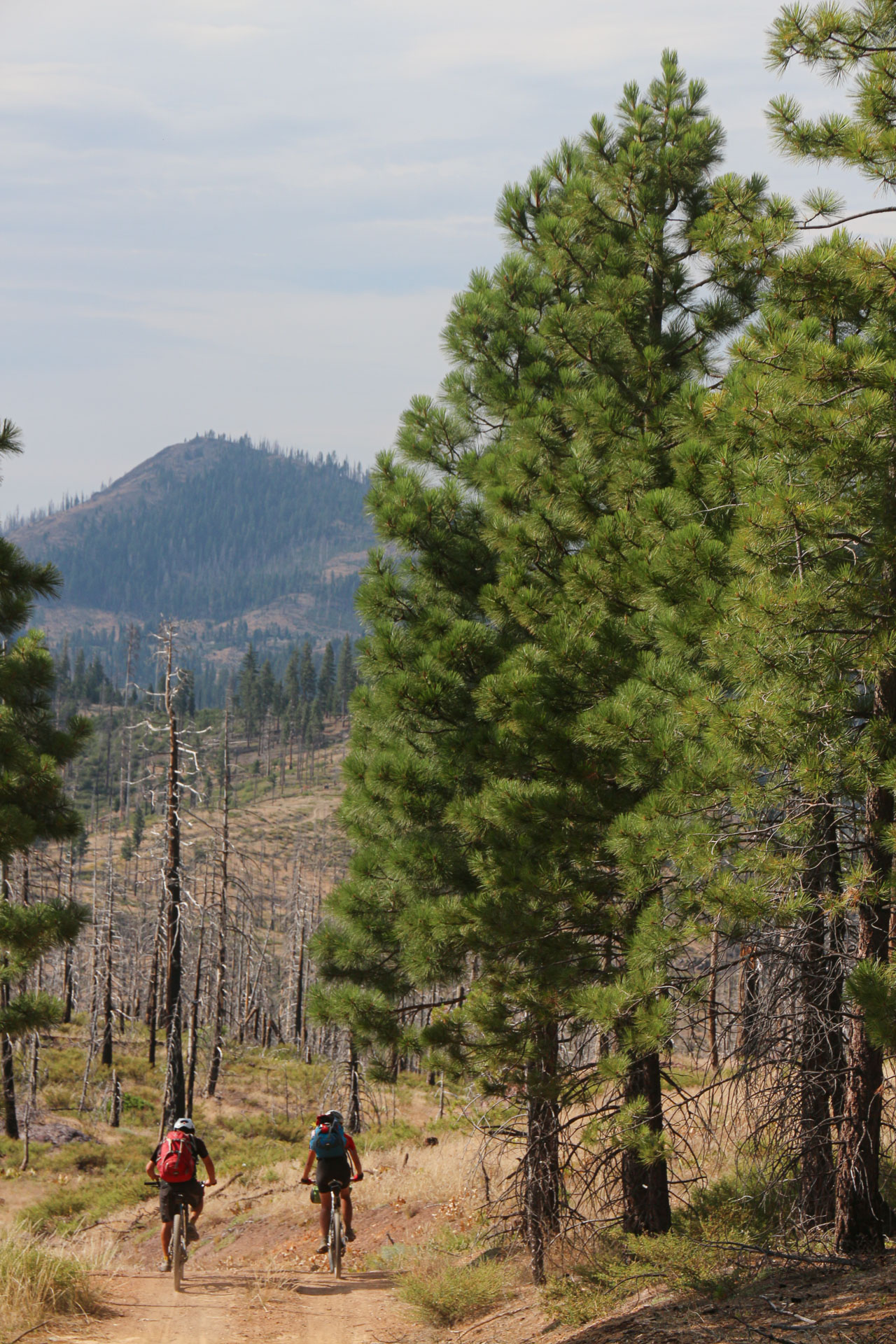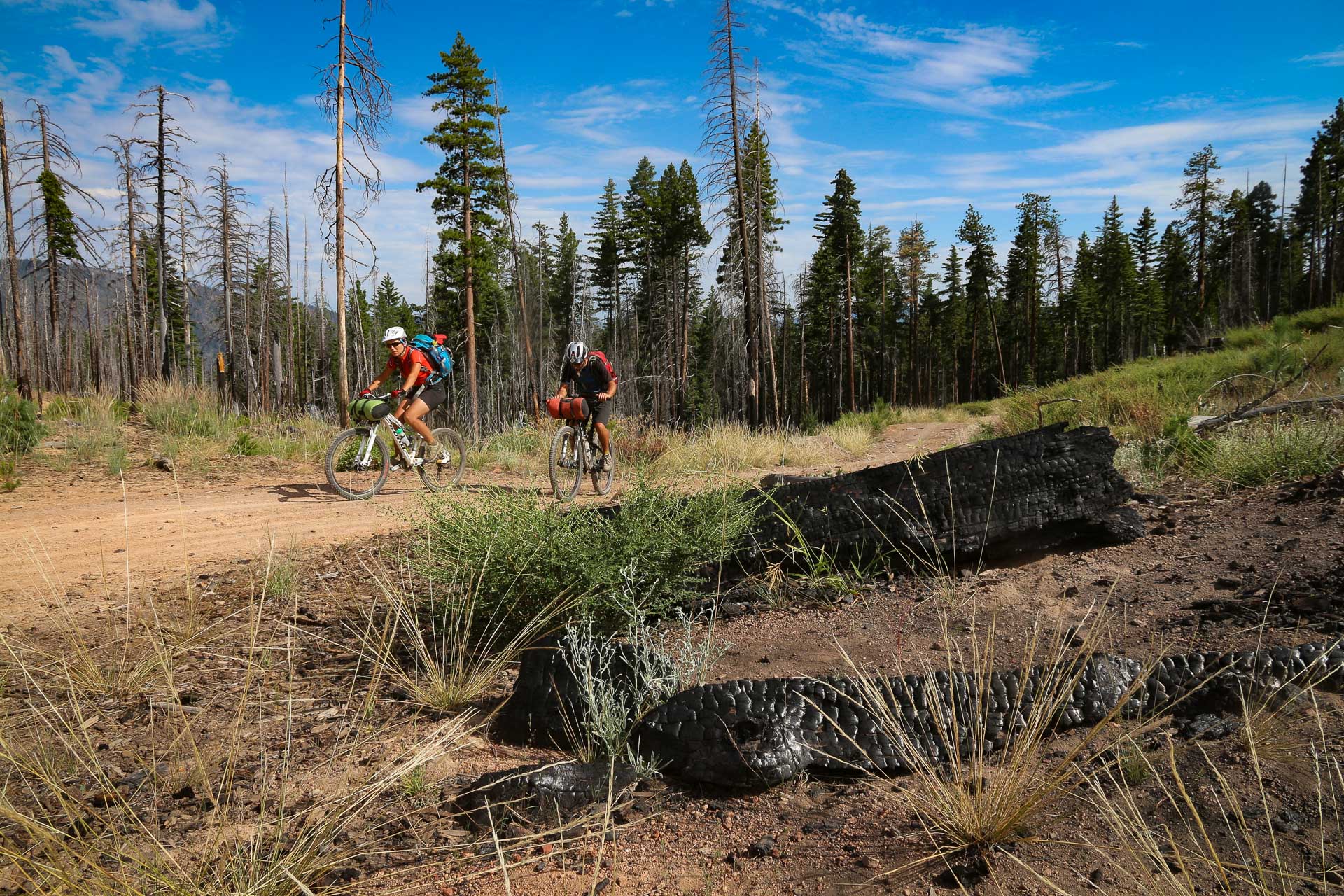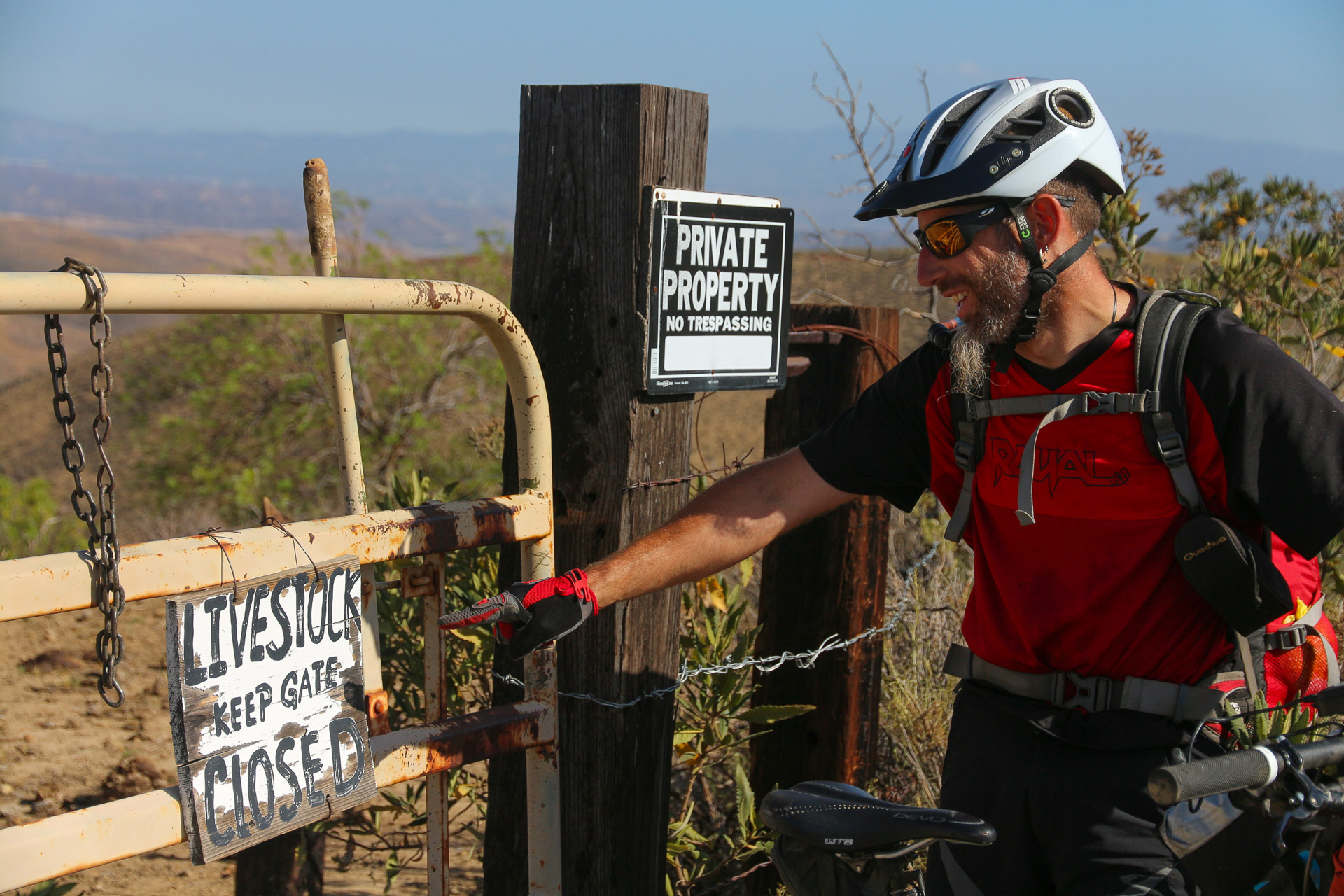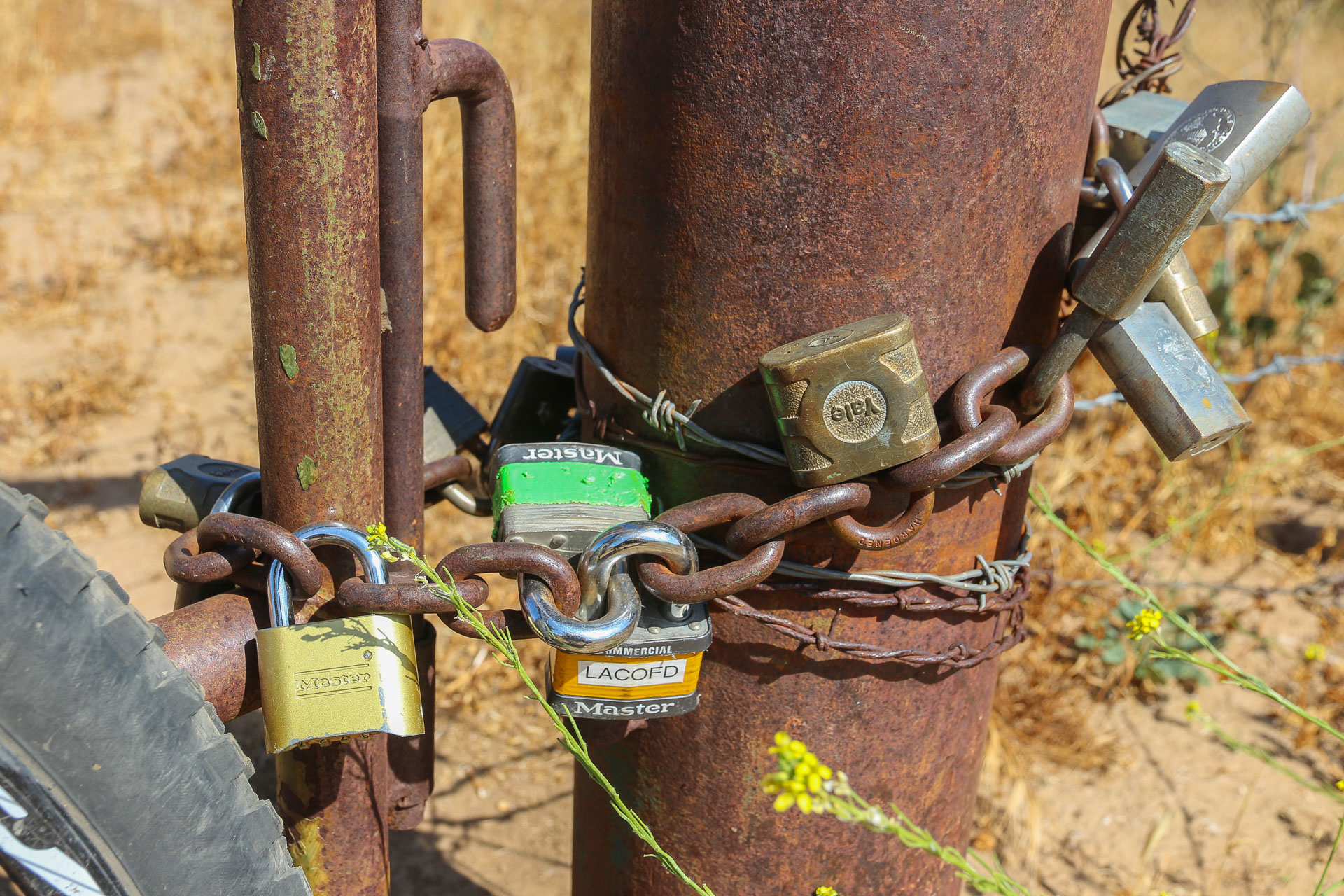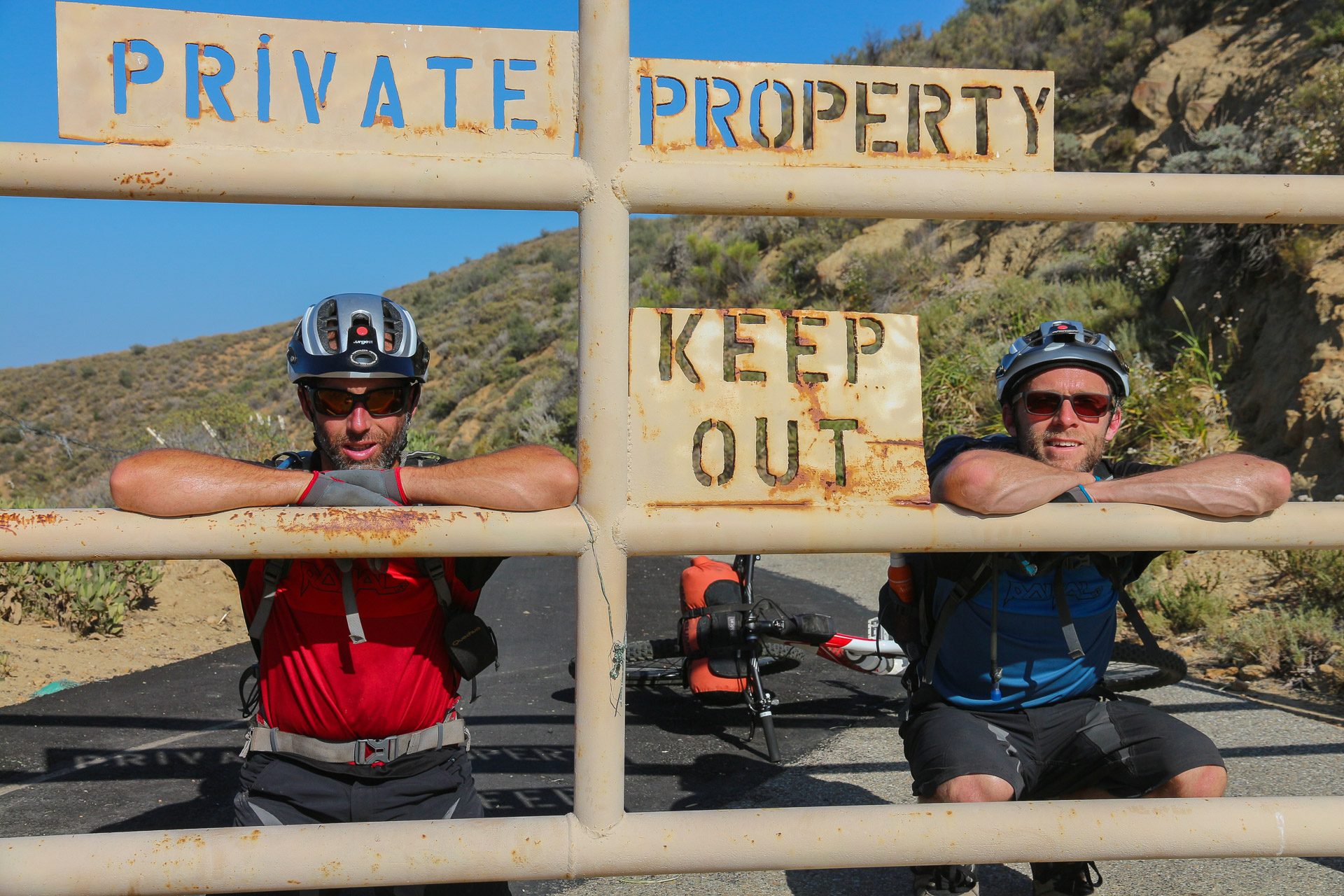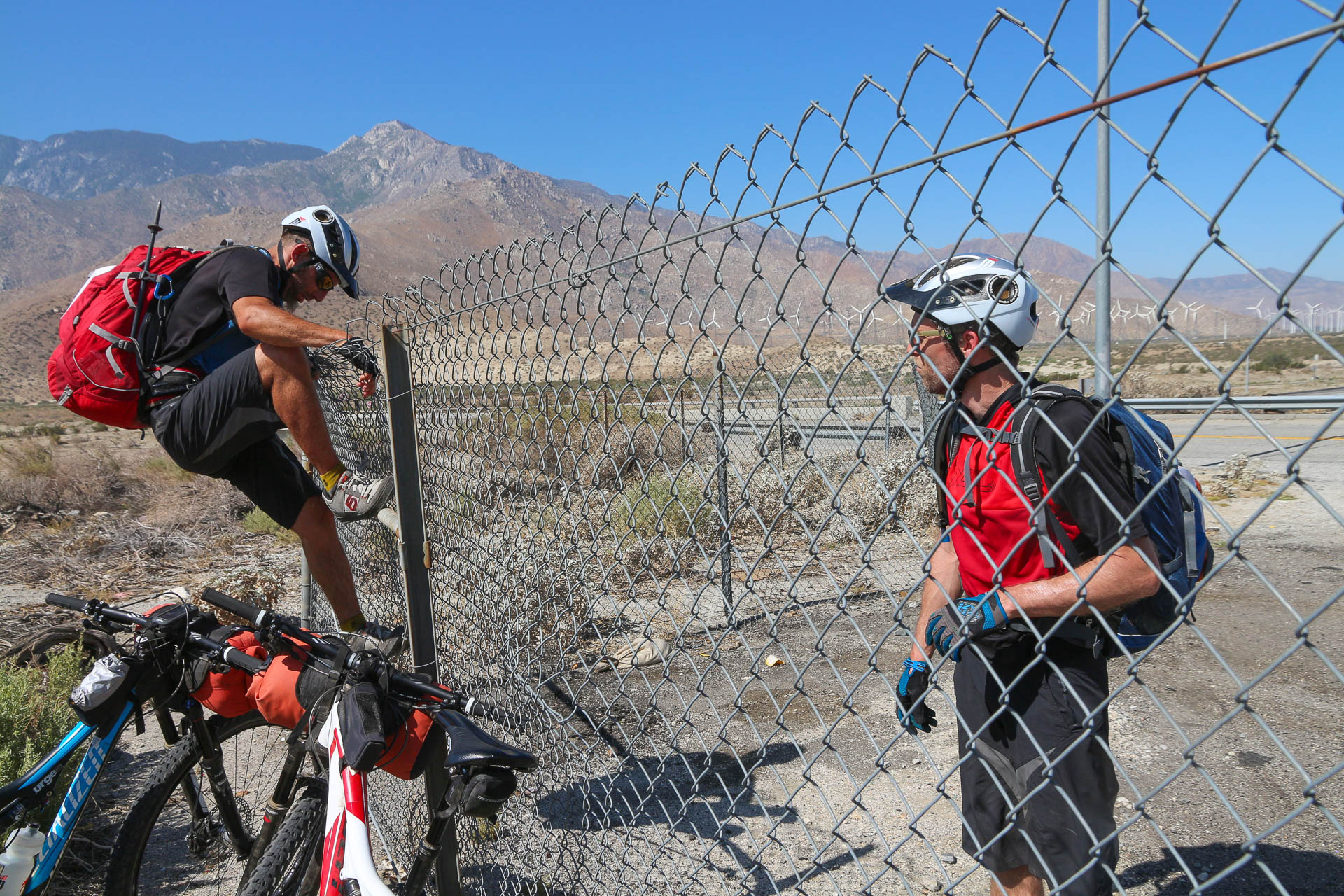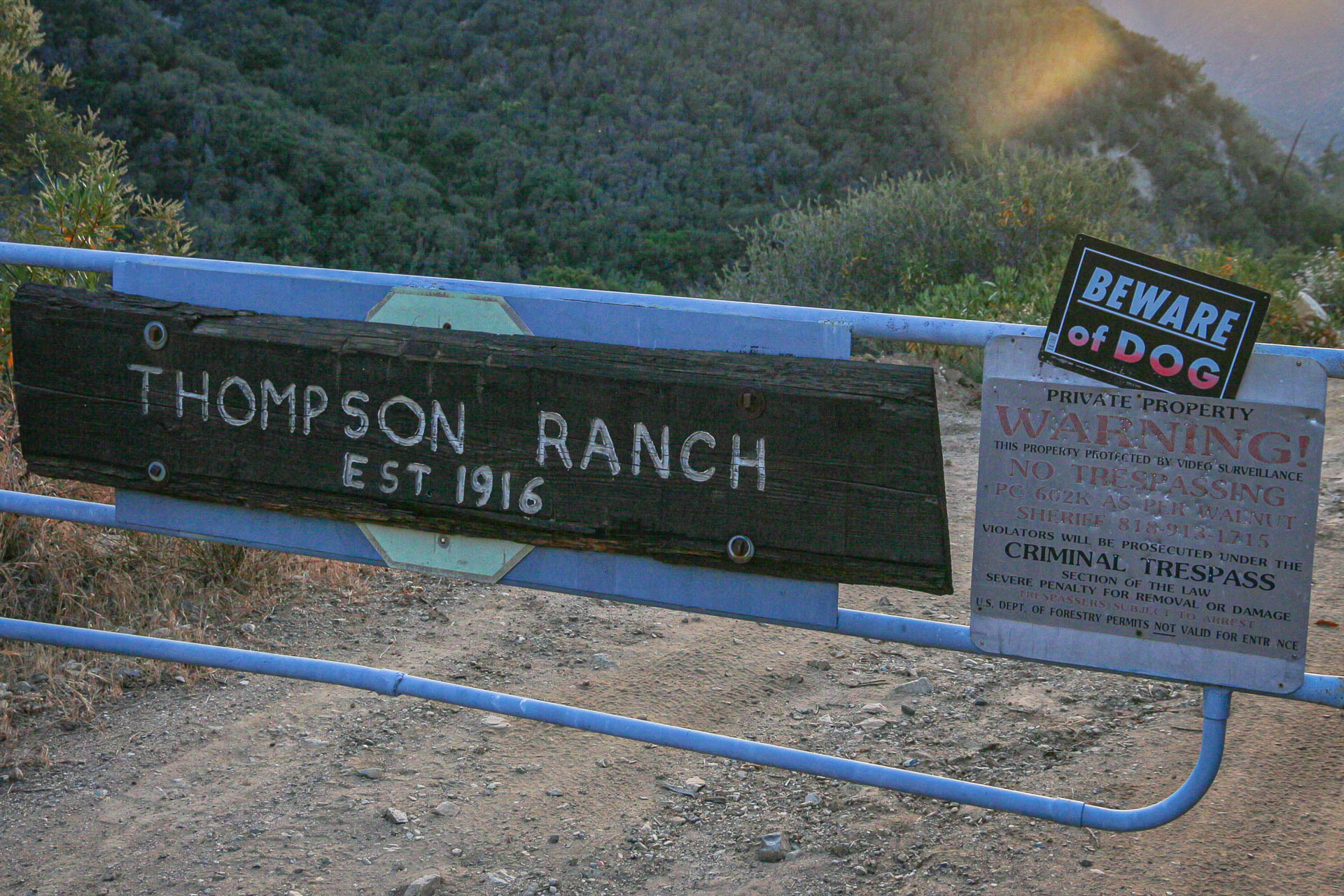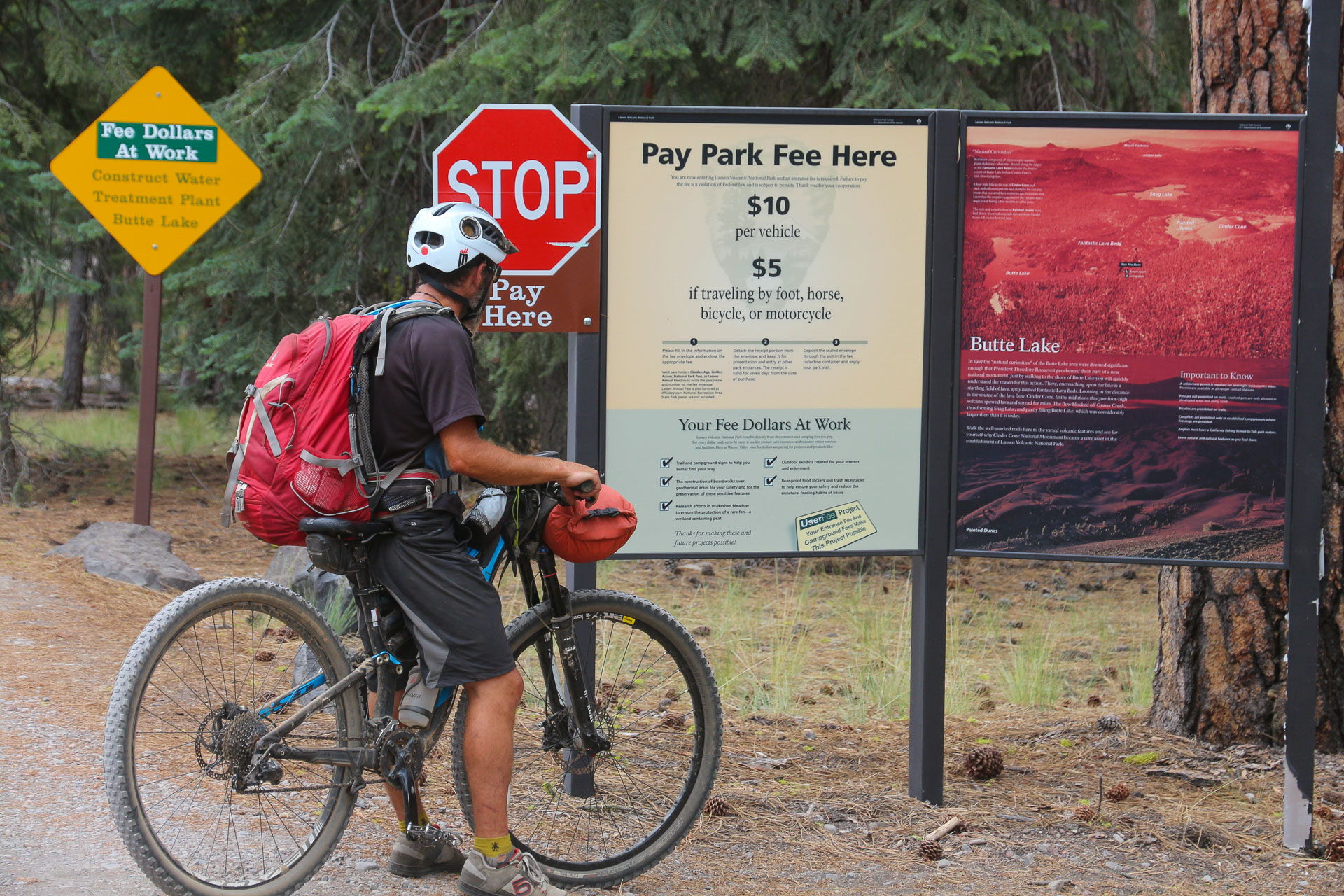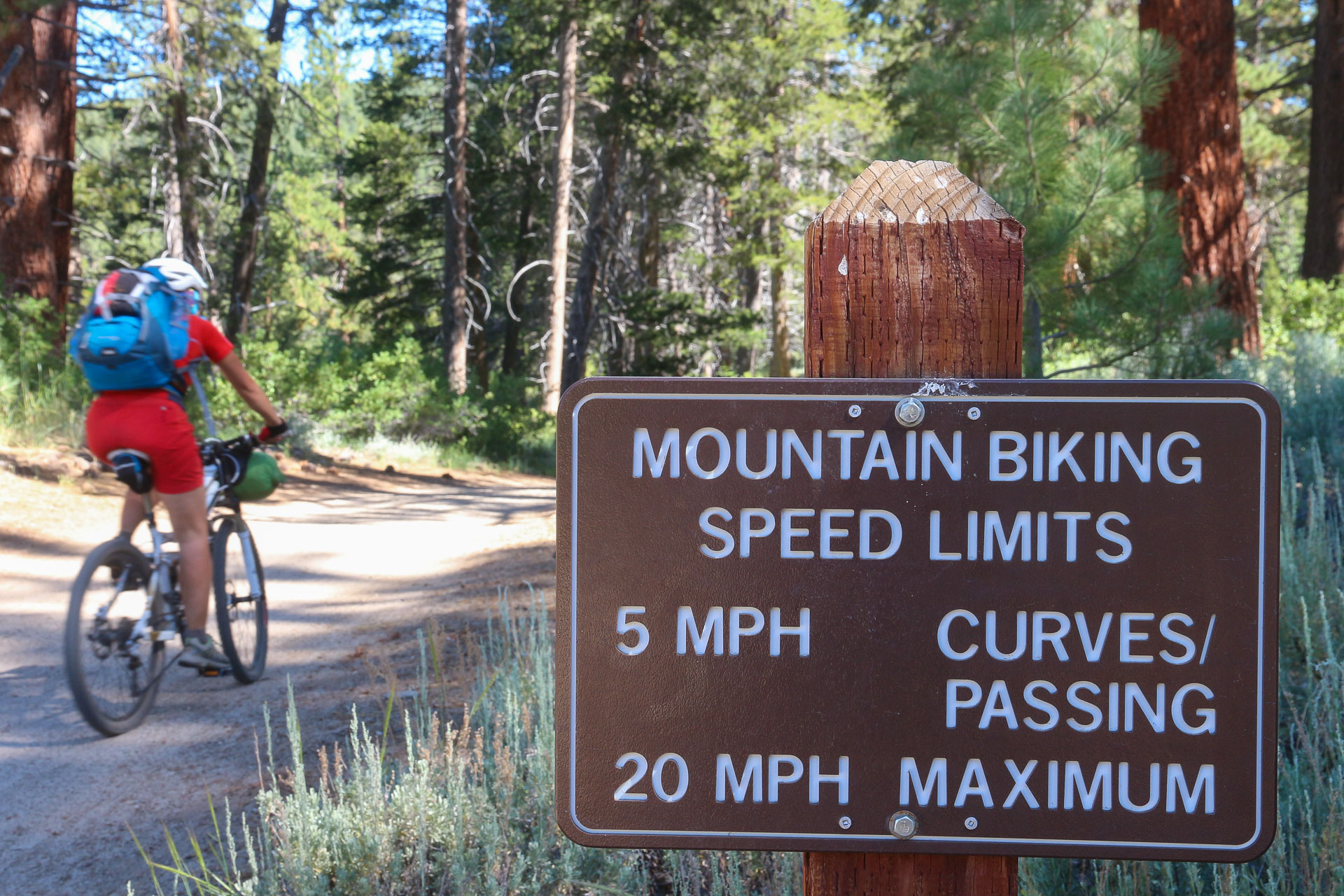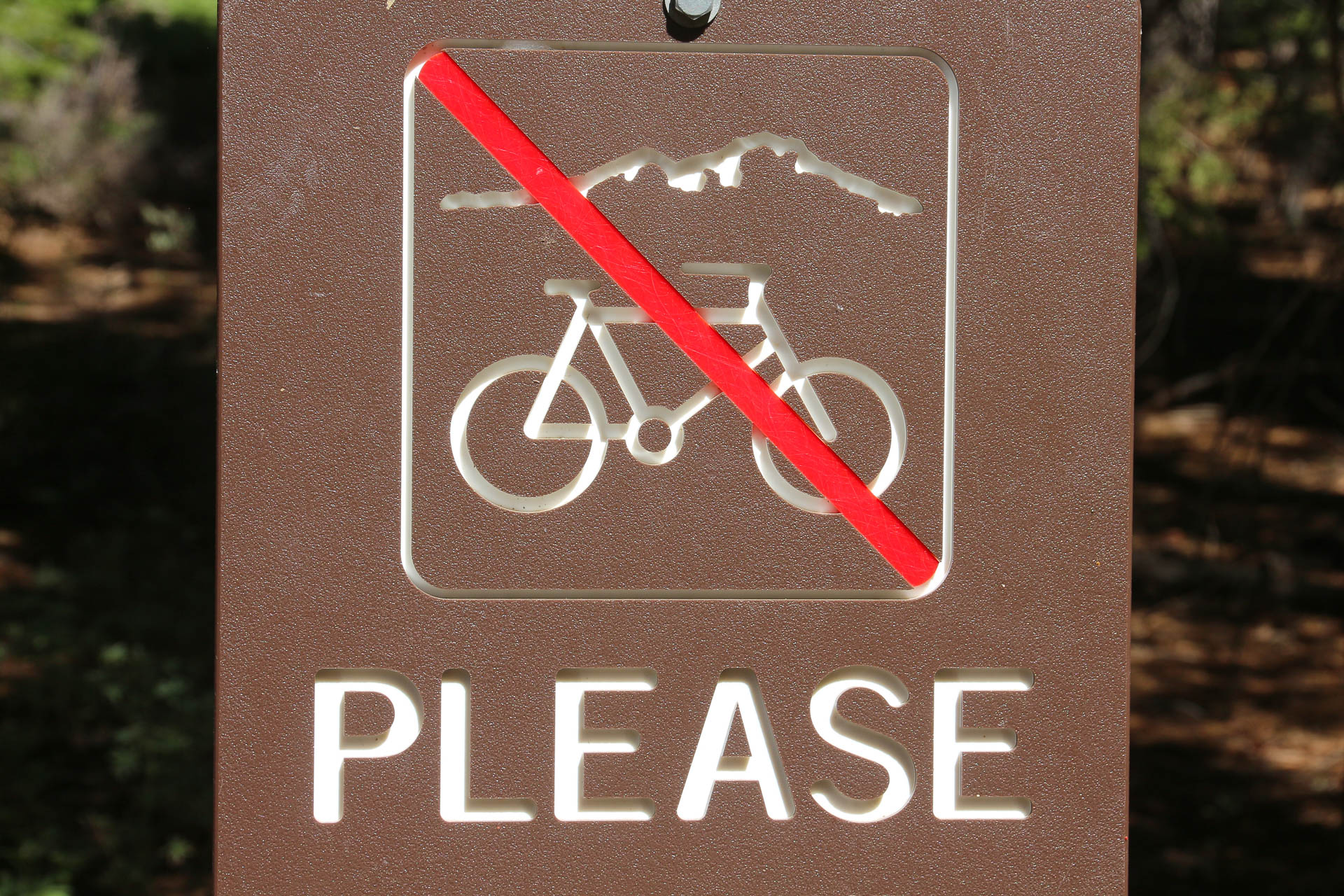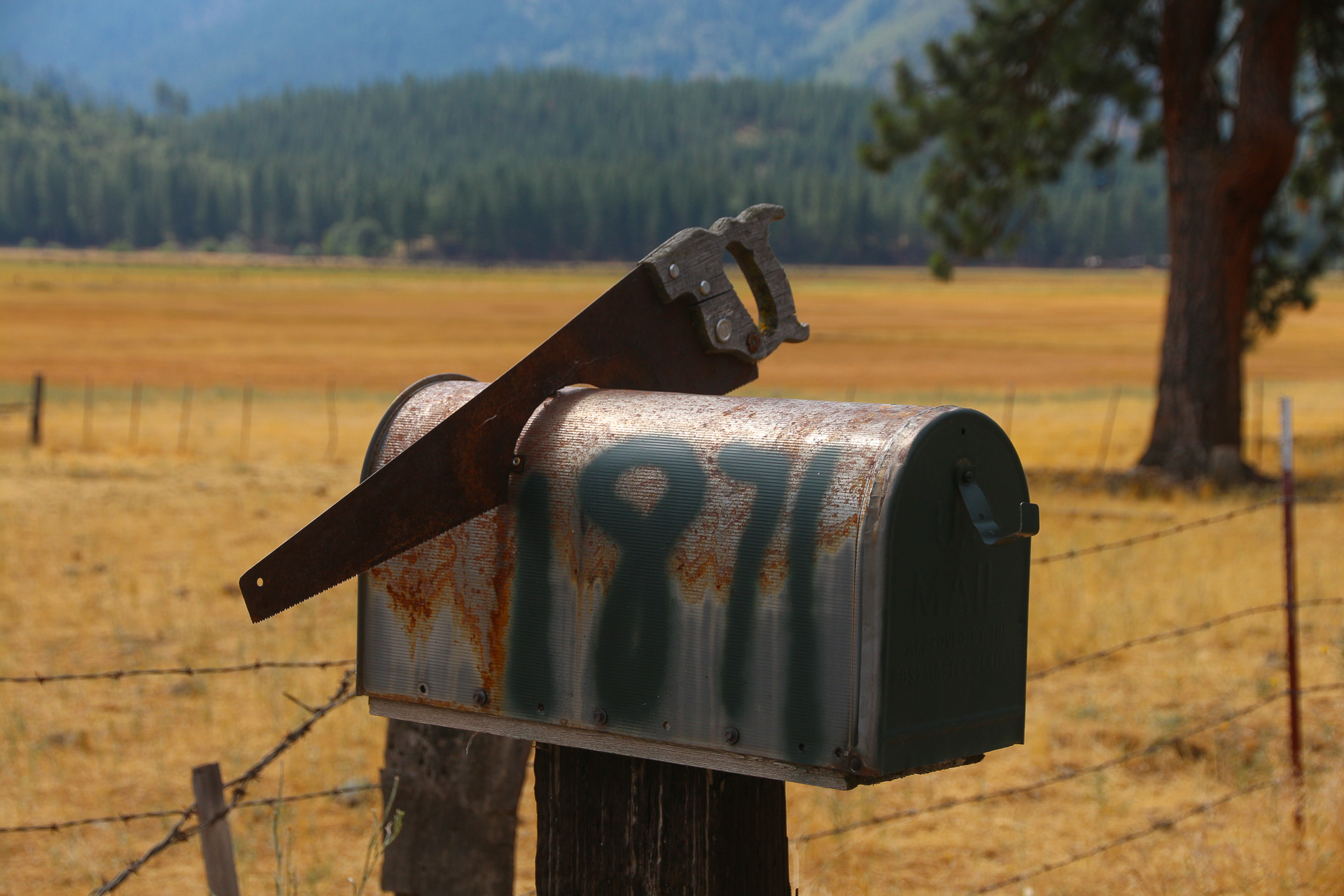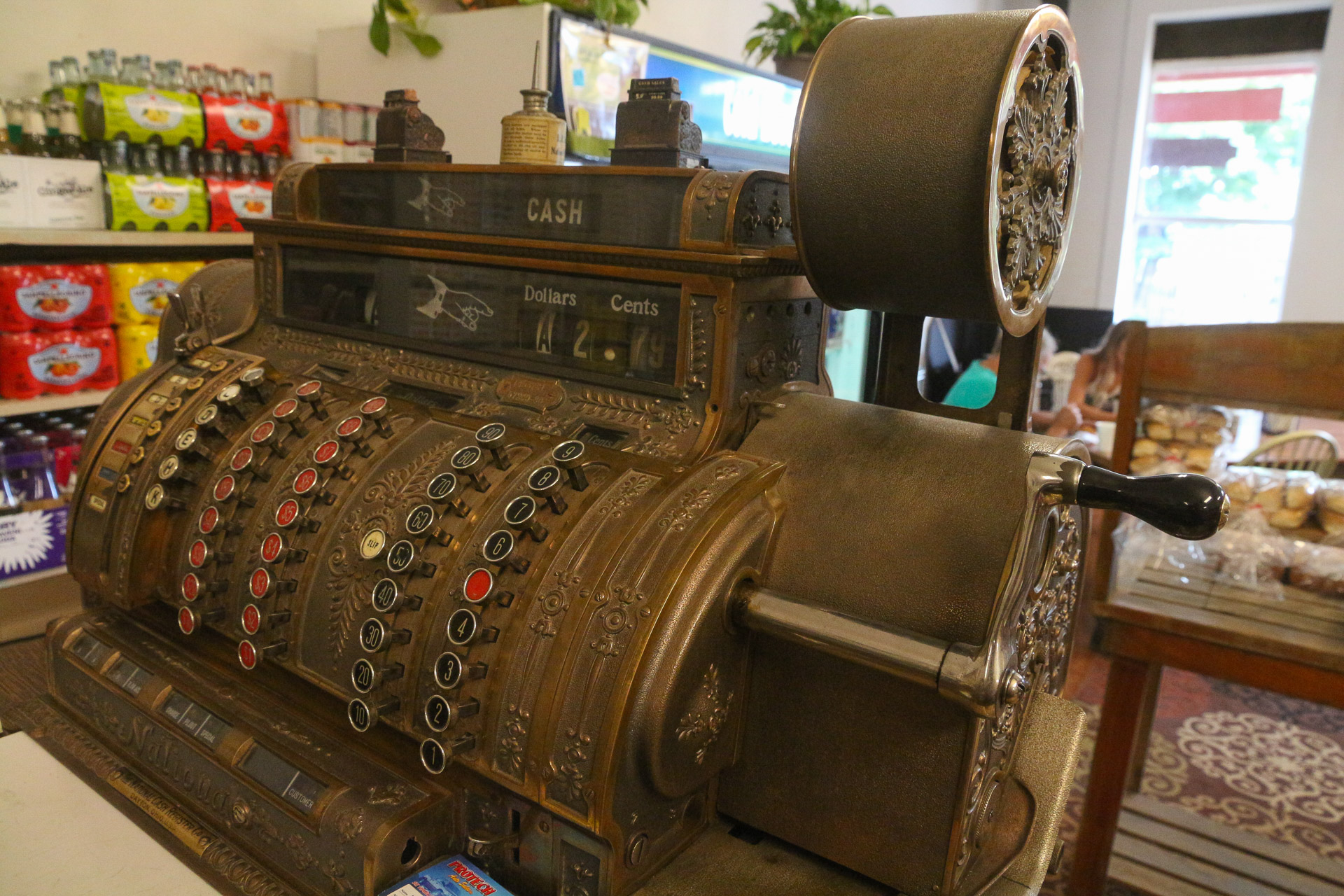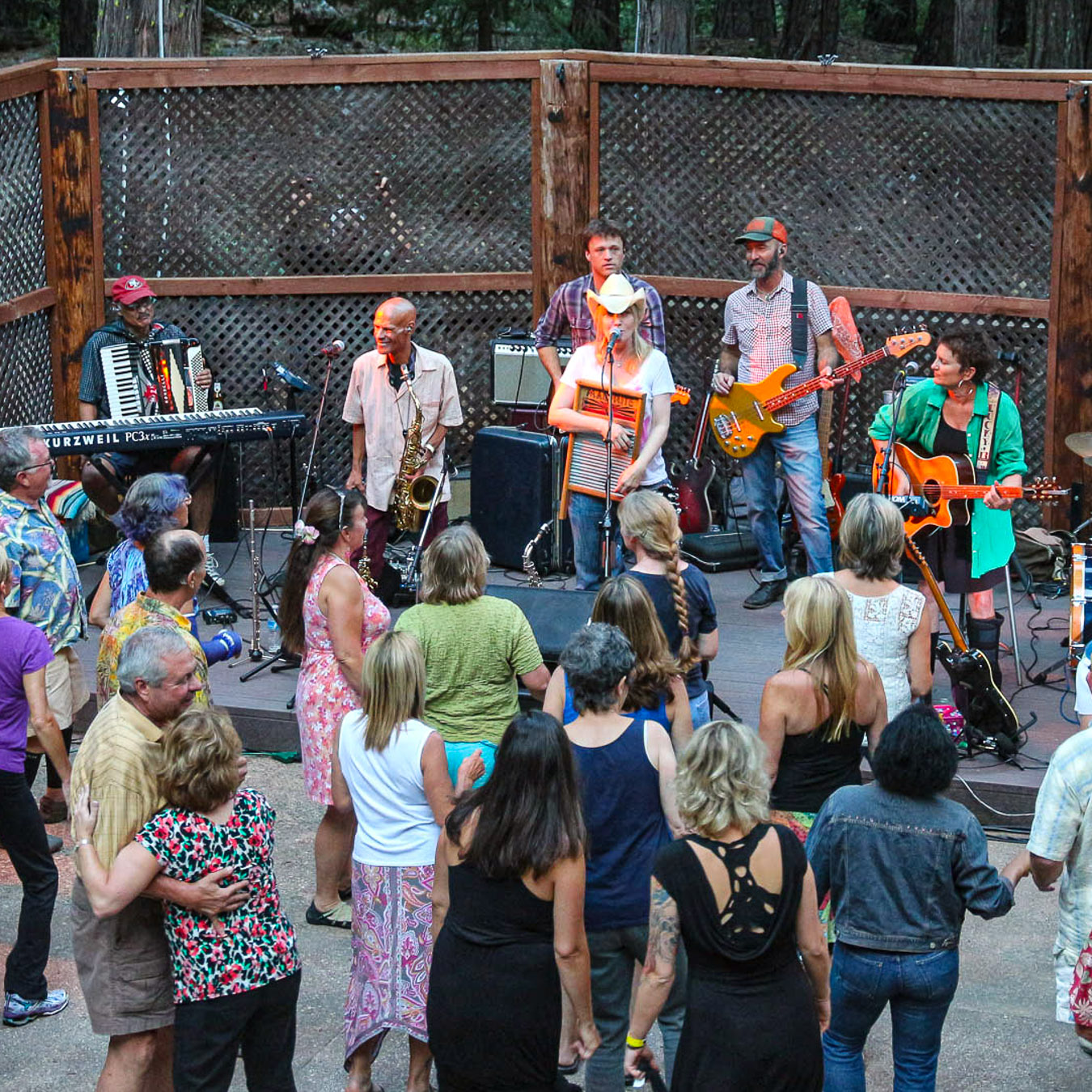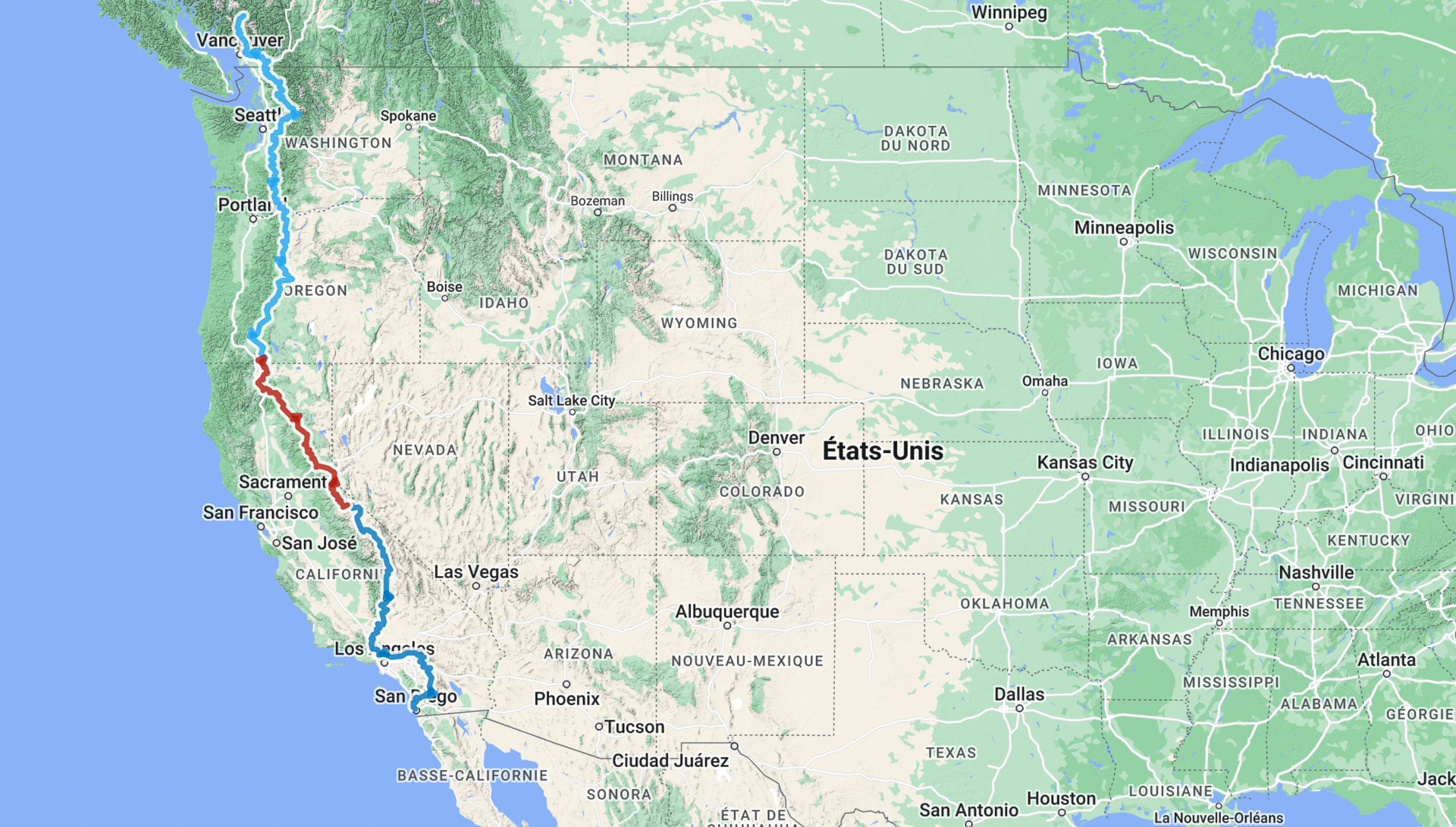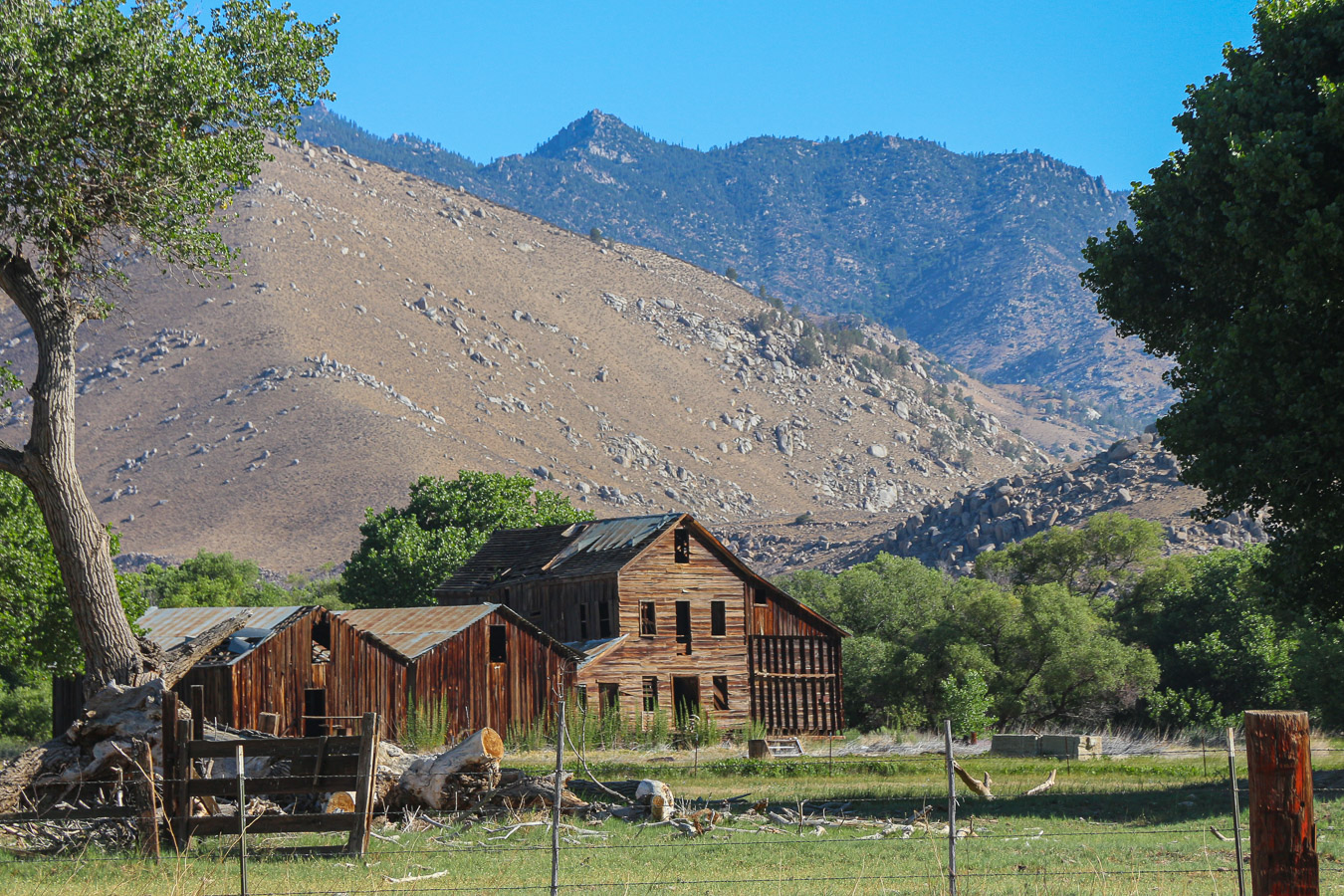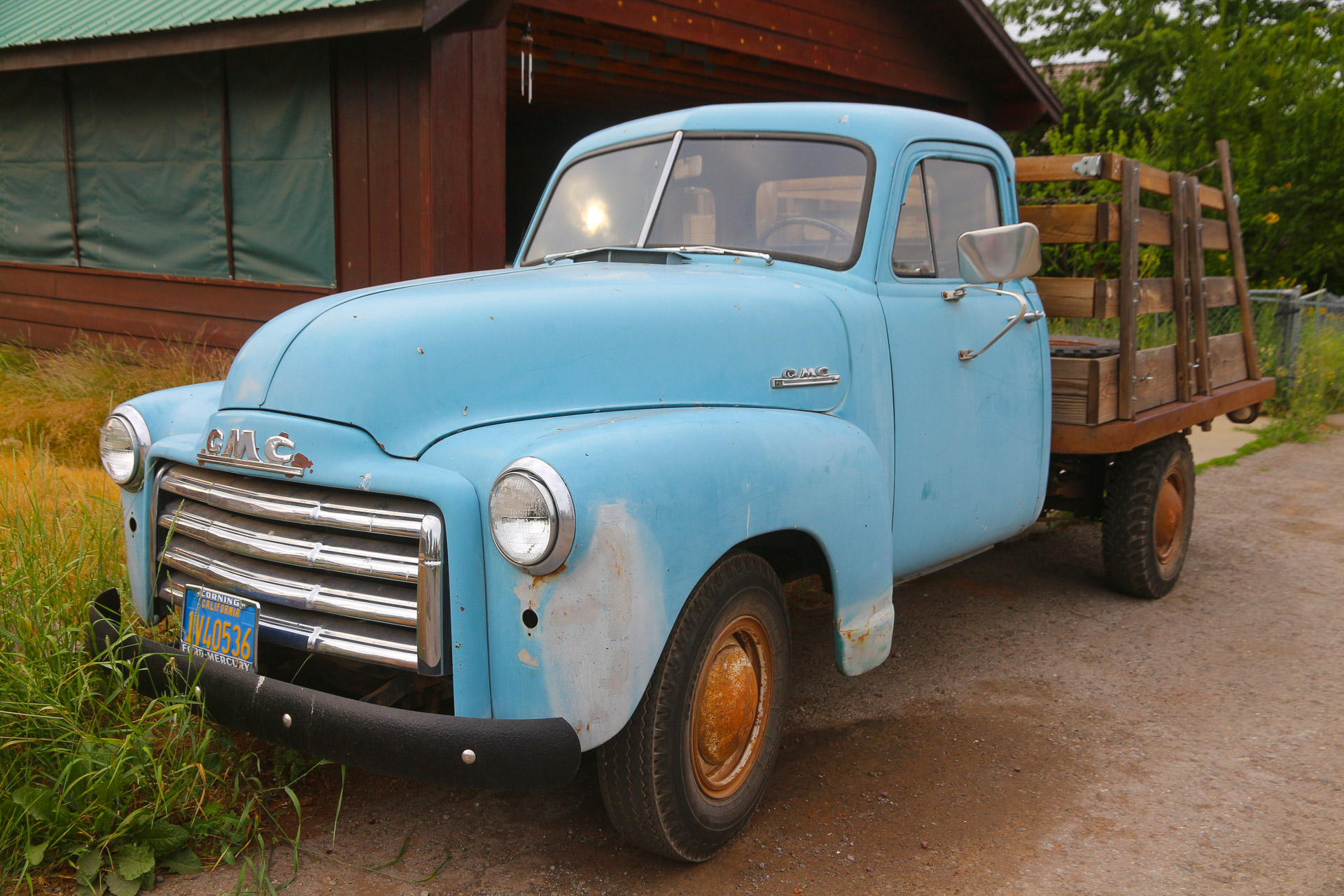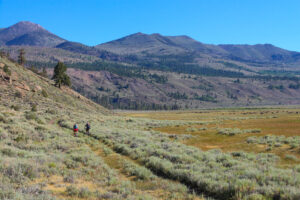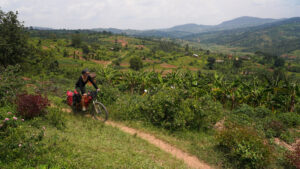CALIFORNIAN BACKCOUNTRY ADVENTURE
Long haul journeys are not always the easiest stories to tell. It would take hours... We don't get round to it, and as time passes we tell ourselves it's too late, "too long ago". But a great adventure will always be a great adventure! So we decided it was time to share an epic bikepacking trip through the western US, from San Diego to Whistler, with a focus on California.
TEXT
Géraldine Benestar
PHOTOS
Pascal Gaudin
Illustrations
Céline Ollion Toscani
With support from
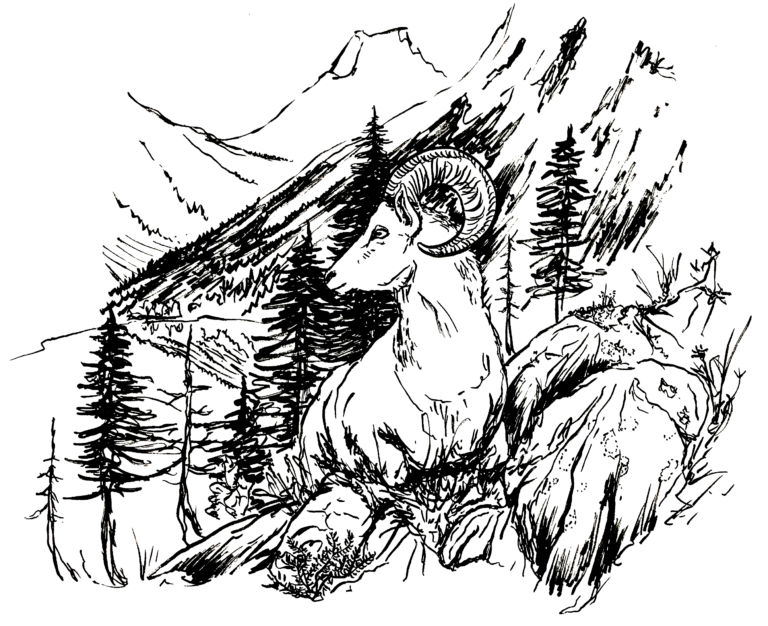
THE ART OF TRAVELLING LIGHT
How do you reconcile long-distance mountain biking, several days of autonomy at a time and the desire to spend as much time as possible out in the wild? “Ultra Light Bikepacking” offers the opportunity to mix all three. The idea involves carrying the strict minimum in order to be self-sufficient and free to set up camp wherever and whenever. The decision to take full-suspension bikes in order to make the most of the trails meant luggage was limited to a handlebar roll and a backpack.
Over 3 months, Jon, Pascal and Finn camped wild almost every night. A choice that requires a certain level of experience and a strong back for carrying a backpack on a daily basis, especially when it involves several days without resupply. A big advantage of travelling as a group is being able to divide the weight of equipment such as tent, stove, first-aid kit and tools.
Our biggest fear was wild camping in bear country. During the 1st third of the trip, each evening we would meticulously put everything edible (including toothpaste) into a dry bag, which we then hung high up on a tree branch, away from the trunk. We encountered this very cute black bear (above photo) high up in the Sierra Nevada. On the dusty trails, we’d sometimes see bear tracks for several kilometers, confirming that they weren’t far away. And then on the PCT, we met some locals who said there was nothing to worry about. If a bear came near the tent, all we had to do was make some noise and it would be scared off. We stopped hanging our food from then on and had no further encounters…
Stocking up on several days of food at local supermarkets was by far the least enjoyable part of the journey. Followed by the laborious operation which involved removing all the packaging and repackaging everything in ziplocs to take up as little space as possible. Beef jerky came top of the weight/taste ratio, while taboulé mix was a firm favourite (mix with cold water in a ziploc in the morning, it’s ready for lunch!).
Creepy crawlies and other wildlife
Living in the wilderness for several weeks led to numerous encounters with the local wildlife. “Chasing” chipmunks as they zigzaged perilously close to our front wheels, and sometimes mistaking busy roads for playgrounds… with the inevitable collateral damage. Fleeting glimpses of elegant deer, who, after sizing us up, quickly disappeared into the forest. Numerous encounters with various types of snakes, rattlesnakes in particular. Yes, rattlesnakes are dangerous, but they aren’t aggressive and are very good at signalling their presence with a shake of their tail rings.
The Pacific Crest Trail, or PCT, is a long distance hiking itinerary crossing the entire American West, from Mexico to the Canadian border. 4240 km long, it follows the peaks of the Sierra Nevada and Cascade mountain ranges. This extensive, waymarked route (which takes 4 to 6 months to complete in its entirety) is popular and well-maintained. Its reputation extends far further than the trail itself, drawing hikers from all over the planet. Its length and commitment make it much more than just a major trek, it’s a life (changing?) experience.
Our route often crossed the PCT, and on the advice of local mountain bikers, we even took the liberty of riding certain sections, leading to inevitable encounters with a few “PCTers”, whose beard lengths were a guage of how long they’d been on the trail. In resupply towns along the route, there was always a hustle and bustle around the main grocery store, which often doubled up as a bar. Through hikers (those hiking the whole PCT in one go) took advantage of the opportunity to refuel, do their laundry and treat themselves to a round of cold beers.
trail angels
As we began to appreciate the scale of the PCT phenomenon, we also discovered the unique concept of “Trail Angels”. These are volunteers who resupply water depots for walkers along the PCT. Given the heat we experienced in California, it’s easy to imagine that trekkers simply can’t physically carry the amount of water needed between 2 stages. That’s where the trail angels come in, taking care of the hikers, even going as far as setting up rest areas in the middle of nowhere stocked with delicious little treats! Without them, the southern part of the route would probably be unfeasable. But the trail angels work doesn’t stop there!
Hiking the PCT offers a deep connection with nature, but the experience is also about bringing people together! The trail angels’ benevolent actions range from picking up a walker in their car to shorten a stage, to offering them medical care as well as food and board… None of it is planned, it’s all spontaneous and voluntary. The spirit is “leave no trace”: no food left in the wild, to avoid attracting wild animals. And above all, “don’t overdo it”, so that PCTers get the most out of their immersive experience! “Well-considered generosity and kindness… in moderation” sums up the spirit of Trail Angels.
Magic Lake Tahoe
Lake Tahoe is a jewel in the Sierra Nevada mountain range. The largest mountain lake in North America, its incredible emerald green waters stretch over 120 km at an altitude of 1900 metres. Its shores are favored by the rich and wealthy from San Francisco and nearby Nevada. After a resupply our aim was to get back into the wild and find the best camp spot overlooking the lake. Mission accomplished, with a superb sunset to boot!
The next day promised kilometers of prime singletrack on the Flume Trail, a famous mountain bike route on a balcony trail above the lake that draws mountain bikers from far and wide… A fairly easy, smooth, white-sand singletrack trail, with stunning views, under a deep blue sky. A trail we won’t forget in a hurry!
Drought and fire
At the time of our visit, the state of California was in the midst of one of its worst droughts in history. There had been absolutely no rain for 3 years, and the consequences were obvious: areas of forest where trees stood lifeless, wild animals foraging closer to homes, deer grazing on the lawns of watered gardens, cougars and bears in need of food.
Another consequence was the very high risk of forest fires. We rode through burnt forests on several occasions. An eerie sight. By midday, the white-hot earth forced us to retreat to the shade for siestas. Paradoxically, the shade was often a bit too cold…
The local people we met have learned to live with the threat of fire. Some advised us to be extremely vigilant at the slightest sight of smoke in the distance, and to adapt our itinerary to avoid being trapped. But we got lucky, not once needing to reroute to avoid active wildfires.
Since our trip, even though rain and snow have tampered the infernal cycle of long drought, California has had to contend with the worst mega-fires in its history. Global warming has accentuated the effect of fires: more frequent, more intense and more destructive. They’re becoming uncontrollable, creating intense heat zones. Over the last 5 years, an average of 80,000 hectares of forest have been destroyed annually.
PRIVATE PROPERTY
Sometimes there’s a gap between what you imagine when planning a trip… and reality. We suspected that private property, so dear to American hearts, might be an issue… but not to such an extent! Every patch of land seems to belong to someone, and everyone is literally fencing off their world, making their point with menacing (humorous?) signs such as “If you can read this, you’re within my line of fire”. So what do you do when you’ve planned a route through some stunning landscapes and barriers keep blocking your way? In true French style, we decided to ignore most of them… riding past signs and surveillance cameras, convincing ourselves that we weren’t actually doing anything wrong! Would the minimum impact of passing through these (mostly empty) properties on bikes really change the face of the world?
In the end, everything went pretty well! Just one interesting anecdote: a rastaman named “Jah” gave us a rough welcome with his dogs, acting like a sheriff as he asked to check our identities. He blankly refused to let us pass through his land, forcing us to make a long detour, but we think we know why…
In the same spirit, everything in the US is regulated in terms of use. There are paths for walkers, others reserved exclusively for bicycles or horses. The signs and indications are always very clear. This extreme organization of natural areas left us a bit bewildered… Leading us to appreciate all the more the amazing network of historic paths that criss-cross our French mountains and valleys. What a joy it is to be able to open a map and know that you can ride almost anywhere. It’s a precious freedom, let’s hope it lasts!
American Wild West
This trip took us deep into rural California. The California of ranches, herds and abandoned villages. We discovered elements of the America we dreamt about before arriving, with its huge wide open spaces. We were pleasantly surprised by the friendliness of the people we met, and the warmth they showed us: on several occasions we were invited to camp in peoples gardens, we chatted with mountain bikers, and attended local concerts in a relaxed atmosphere where we were made to feel at home.
Coming soon on Vélo Spirit: This trip through California is a section from a complete south-north traverse of the USA. Discover the rest of the journey through the Cascade Range and Oregon in an upcoming Vélo Spirit article.
Discover more about this trip (in French):
– TransUS à VTT Bul : la suée vers l’ouest ! Magazine Carnet d’aventure n°50
– TransUS, a 28 minute film documenting the journey, available on youtube

